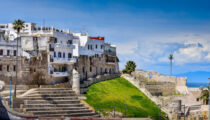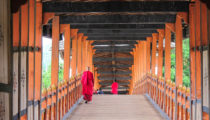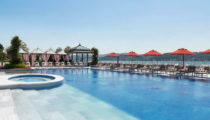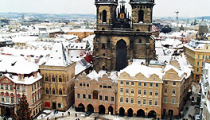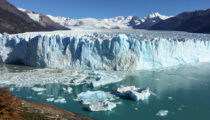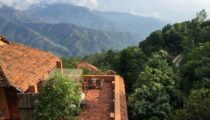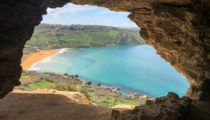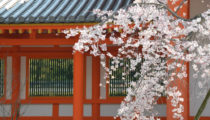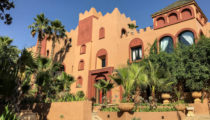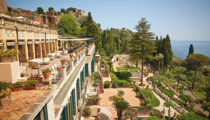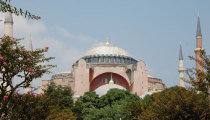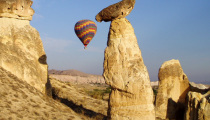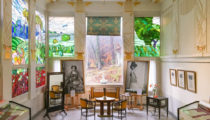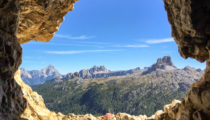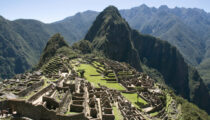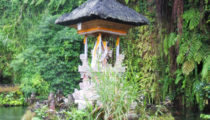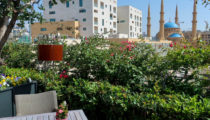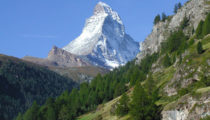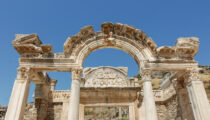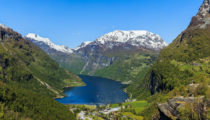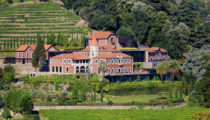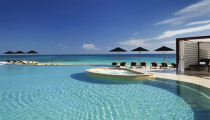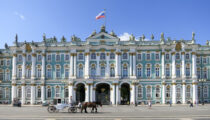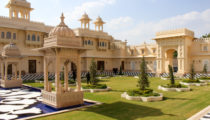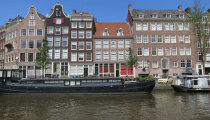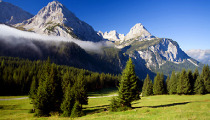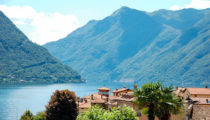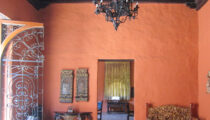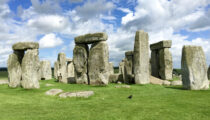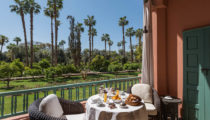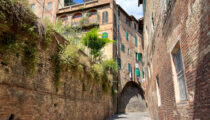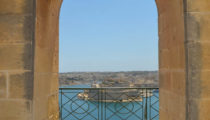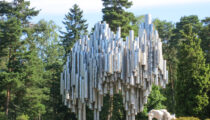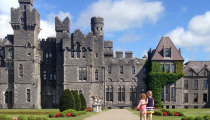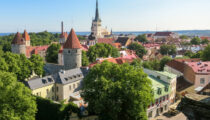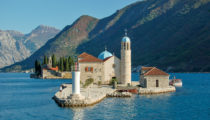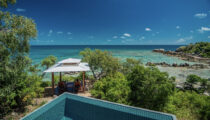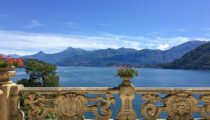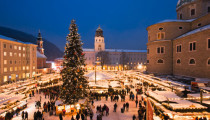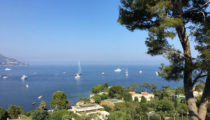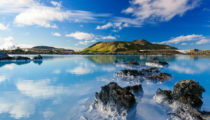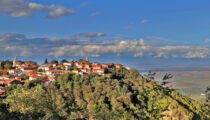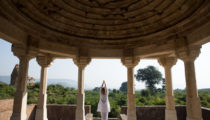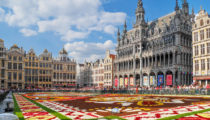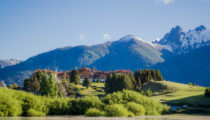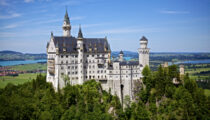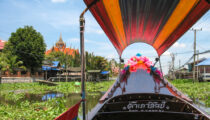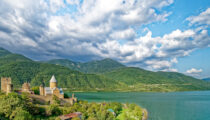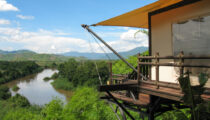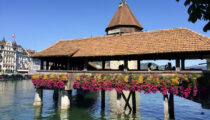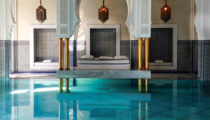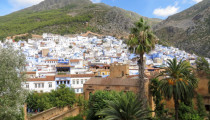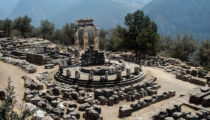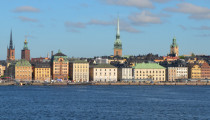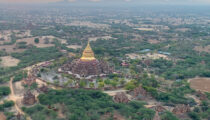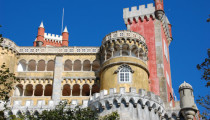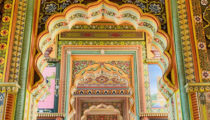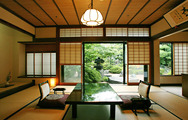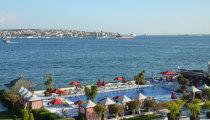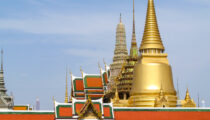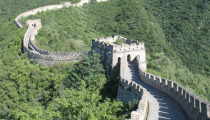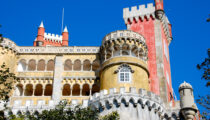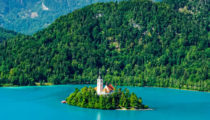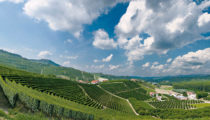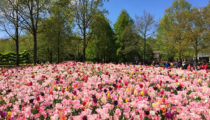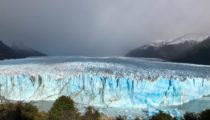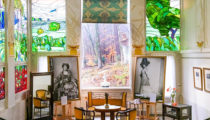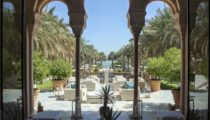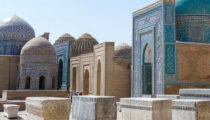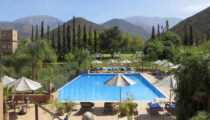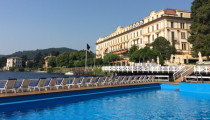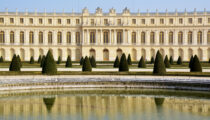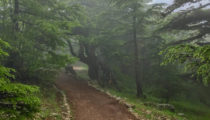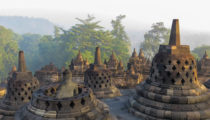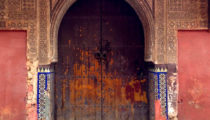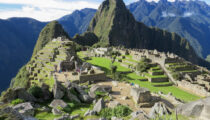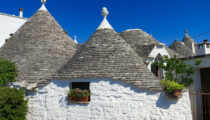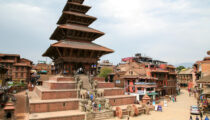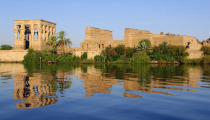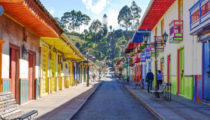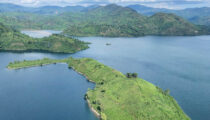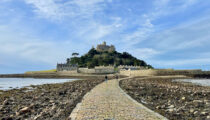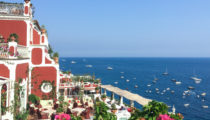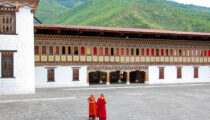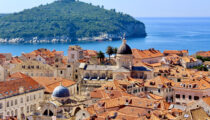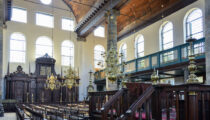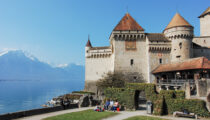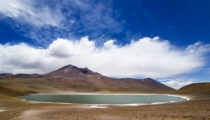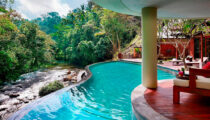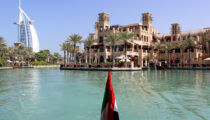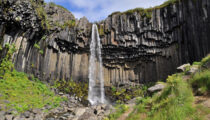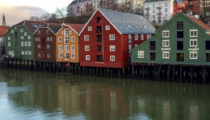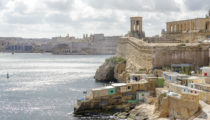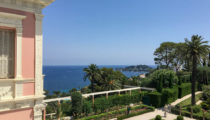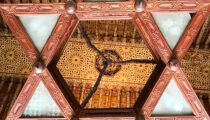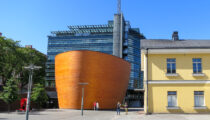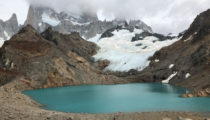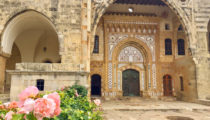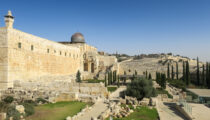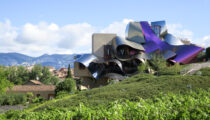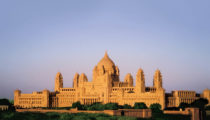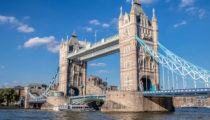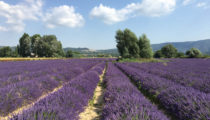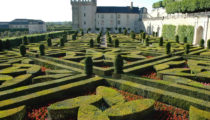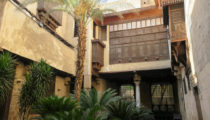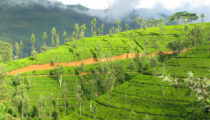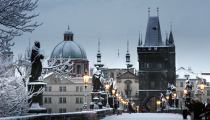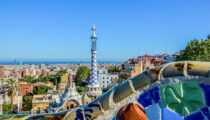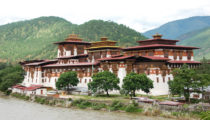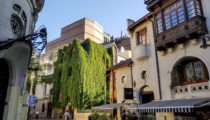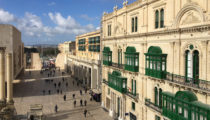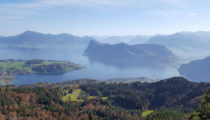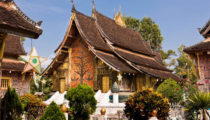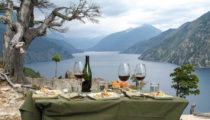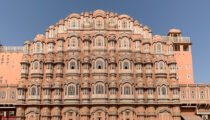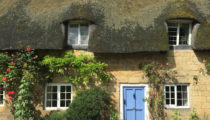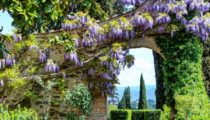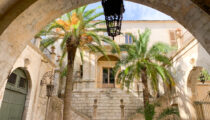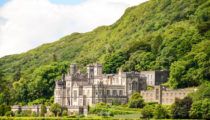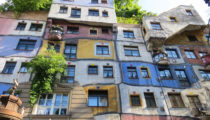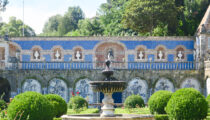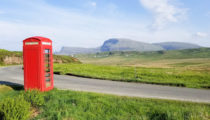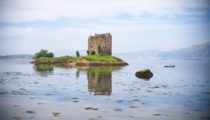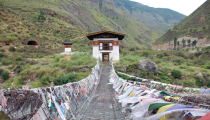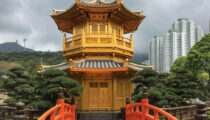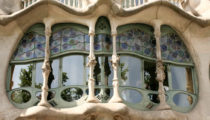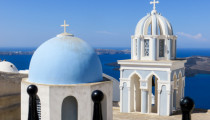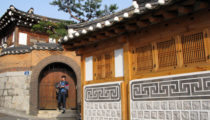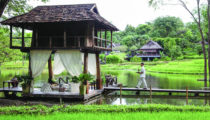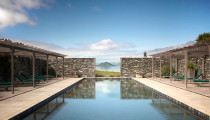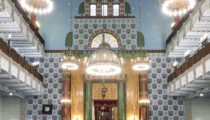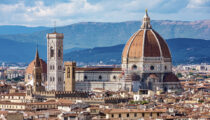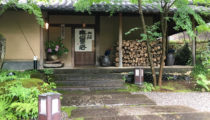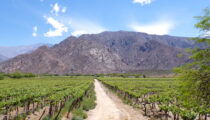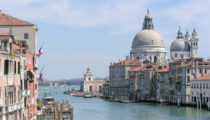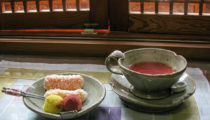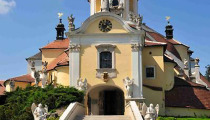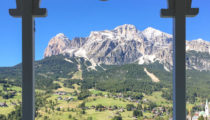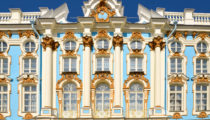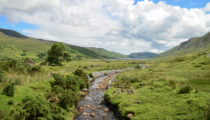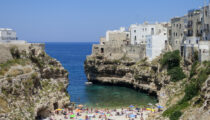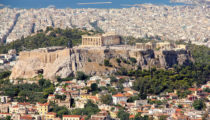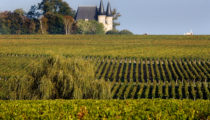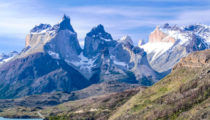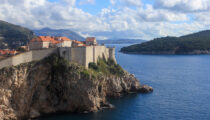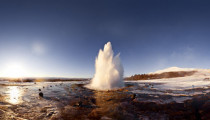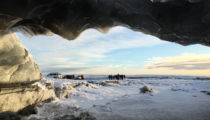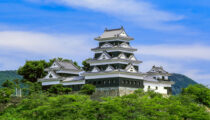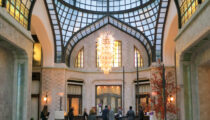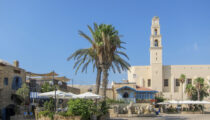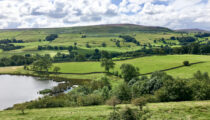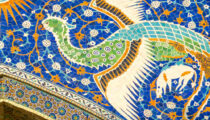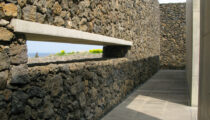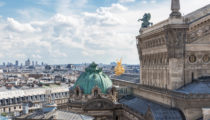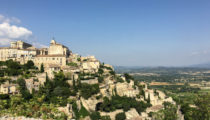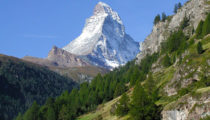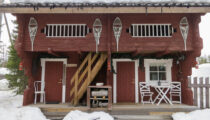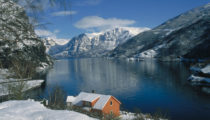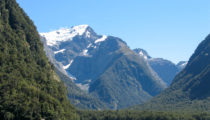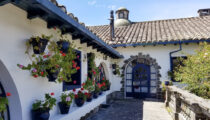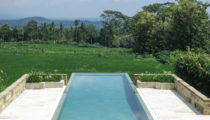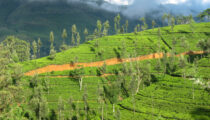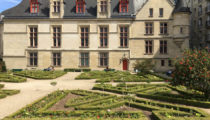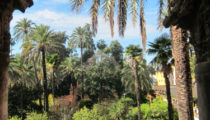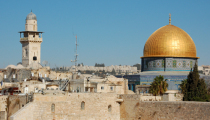February 17, 2024
Favorite Hot Springs, Thermal Baths & Spa Experiences Around the World
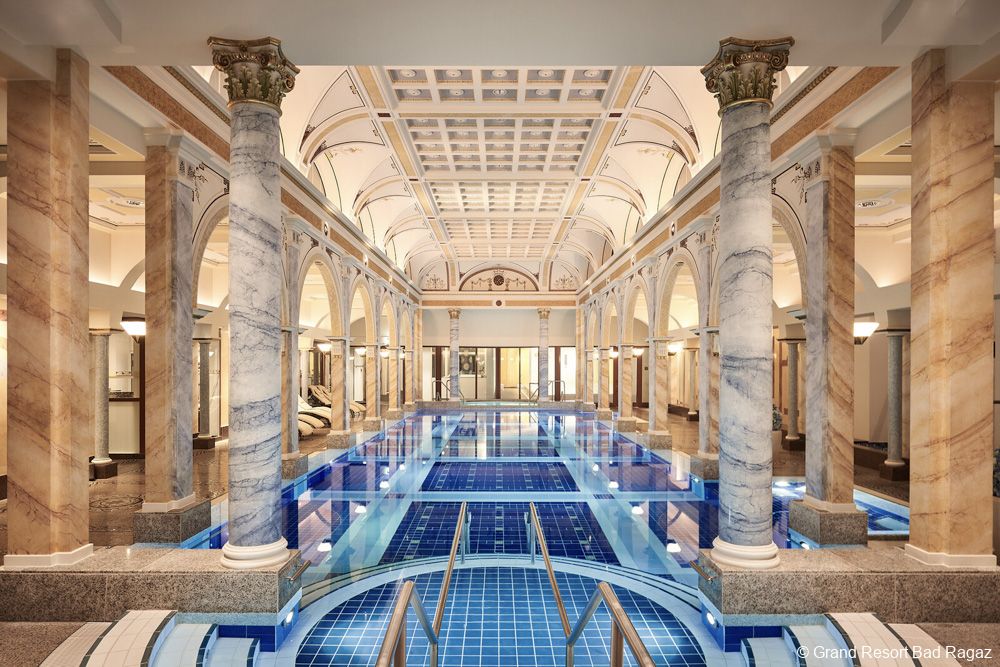
We love experiencing hot springs and thermal baths around the world—such as serene Japanese onsen and open-air baths at spas in cities such as Budapest and Reykjavik—in spectacular settings.
Artisans of Leisure can incorporate local thermal bath experiences and bathing traditions in all of our private international tours.
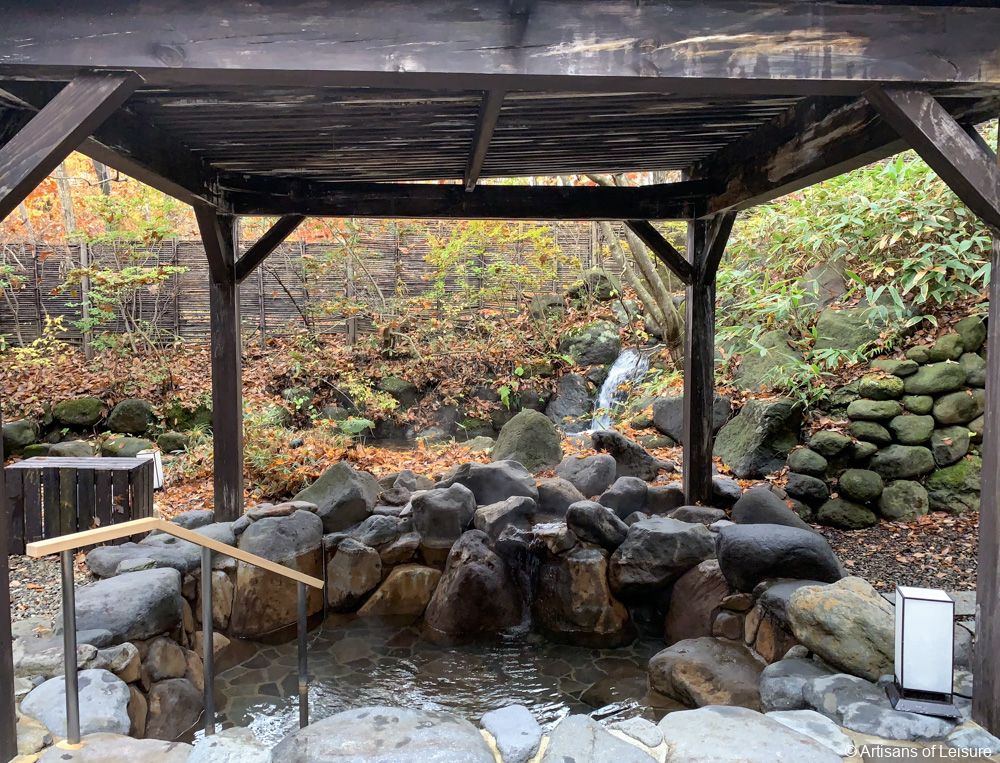 Some of the earliest known bathhouses date to ancient Rome, where they were among the most important public buildings. With the expansion of the Roman Empire, Roman bathing culture, with its complexes devoted to heat, steam, and water therapies, spread throughout Europe, North Africa and the Middle East. Over time, different areas adapted the Roman customs to suit local cultures and religious beliefs.
Some of the earliest known bathhouses date to ancient Rome, where they were among the most important public buildings. With the expansion of the Roman Empire, Roman bathing culture, with its complexes devoted to heat, steam, and water therapies, spread throughout Europe, North Africa and the Middle East. Over time, different areas adapted the Roman customs to suit local cultures and religious beliefs.
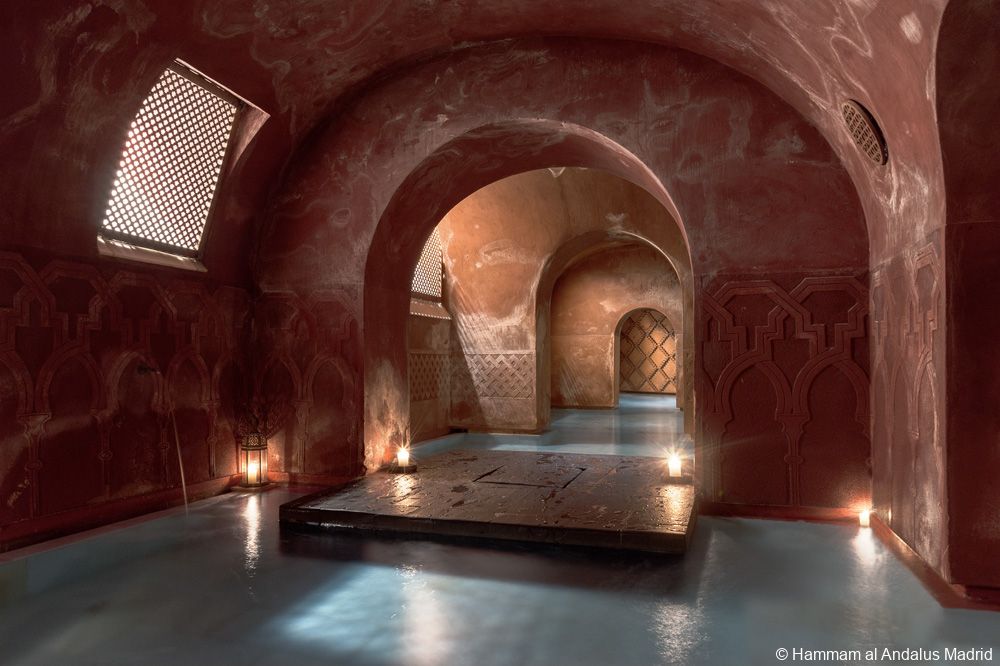
Although methods and treatments vary between destinations, the underlying concept of using water, heat and steam for their therapeutic benefits remains the same across international bathing cultures.
Some of our favorite experiences of local bathing cultures include:
1. Onsen in Japan
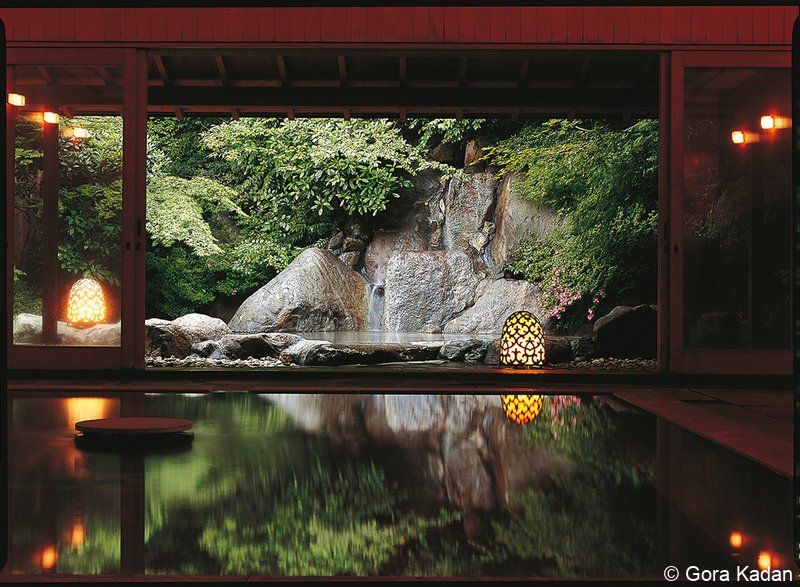
Soaking in steaming onsen (hot springs) while taking in tranquil views of nature is one of our favorite travel experiences in Japan.
Japan’s bathing culture, including thousands of onsen around the country, is a microcosm of the Japanese reverence for nature, tradition and wellbeing. With origins in Shinto and Buddhist beliefs about the sanctity of water and using it to purify the body and mind, Japan’s soaking culture is steeped in centuries of tradition and etiquette (the eighth-century texts Nihon Shoki and Fudoki both mention onsen).
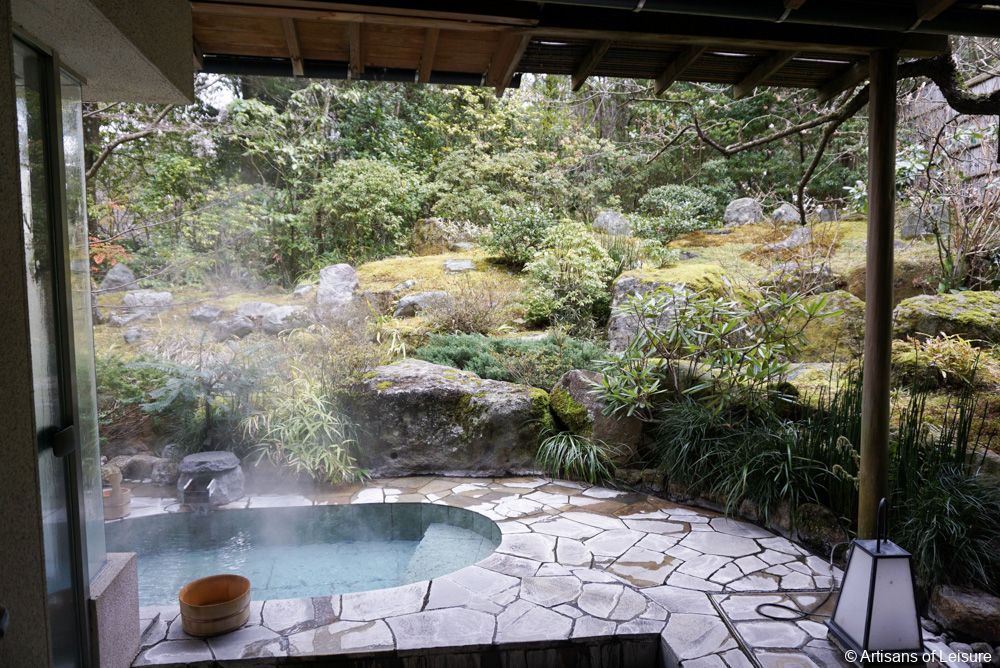
The tradition of soaking in hot, mineral-rich water continues to be an integral part of Japanese life, a serene and rejuvenating experience that promotes mental clarity. Unlike hammams or Turkish baths, bathers enter the water already clean, having showered beforehand; the primary emphasis is relaxation.
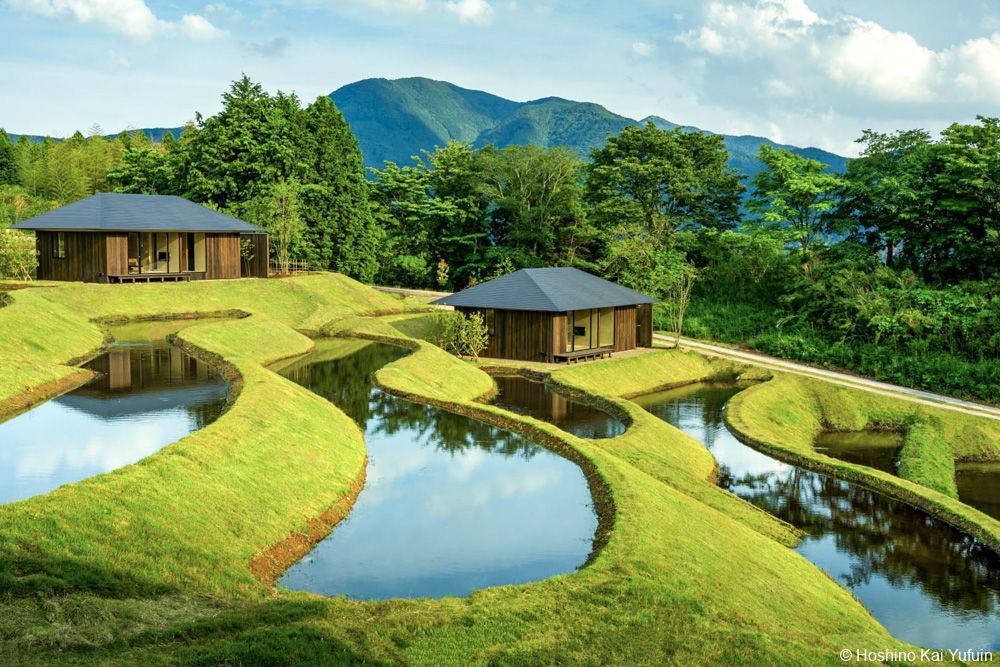
Traditionally located outdoors in picturesque mountain or forest settings that facilitate tranquility and meditation, onsen today are also found indoors, in luxury onsen ryokan (traditional inns with onsen facilities). In some cases, entire resort towns, such as Hakone, Yufuin and Yamanaka Onsen, have developed around them.
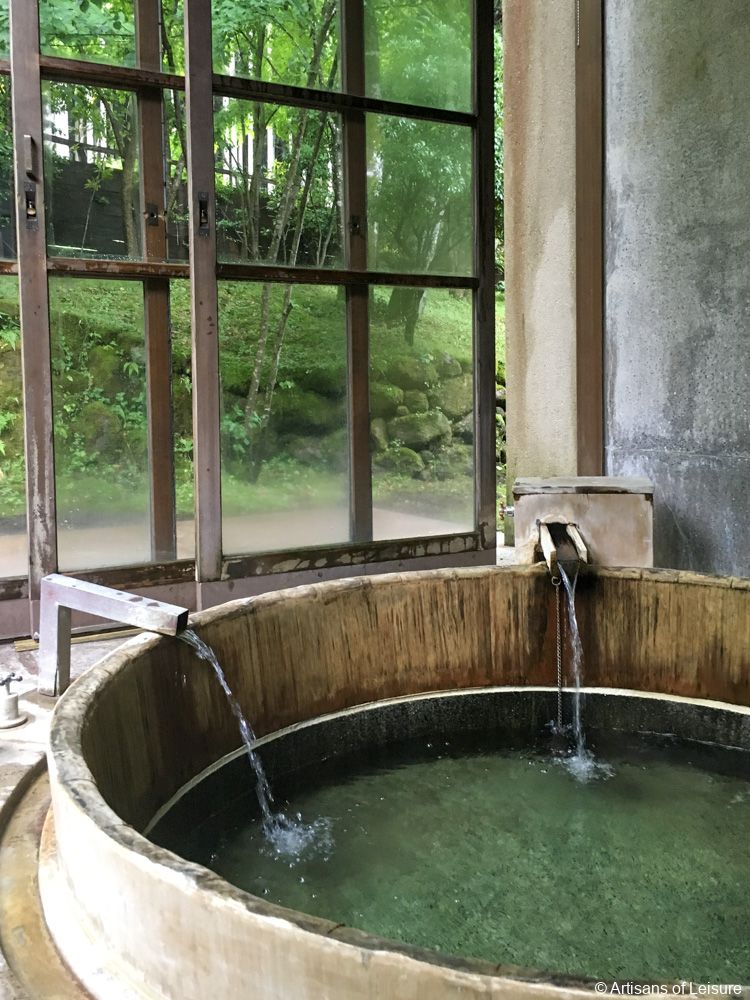
We arrange for our travelers to stay at the top luxury onsen ryokan, a unique opportunity for immersion in Japanese culture, hospitality, and appreciation of the natural world. Many of these deeply atmospheric historic inns have rotenburo (open-air baths) or private onsen as well as soaking tubs in bathrooms that have the geothermally heated mineral water pumped in.
2. The Blue Lagoon, Sky Lagoon and other open-air geothermal spas in Iceland
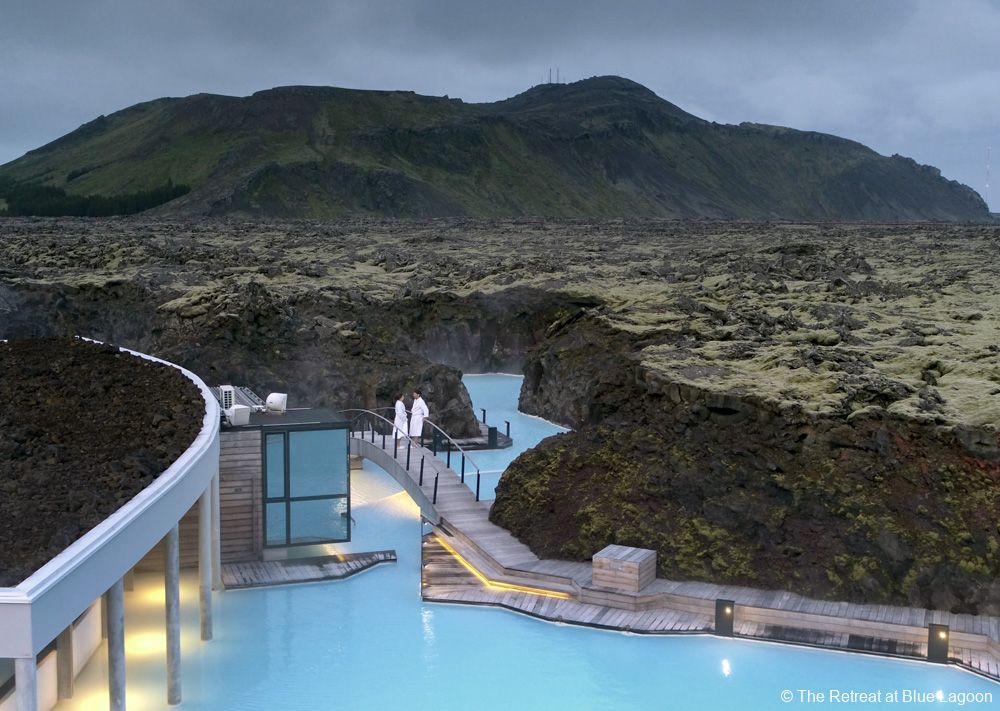
Icelandic bathing culture dates back over 1,000 years thanks to the country’s sublime volcanic landscapes that are rich in geothermal energy. Historically used for bathing (and baking Icelandic rye bread) since the time of the earliest settlements, manmade geothermal pools also began to emerge around the 13th century. Today, geothermal pools in Iceland range from high-end spas with to natural, undeveloped springs in the spectacular landscapes.
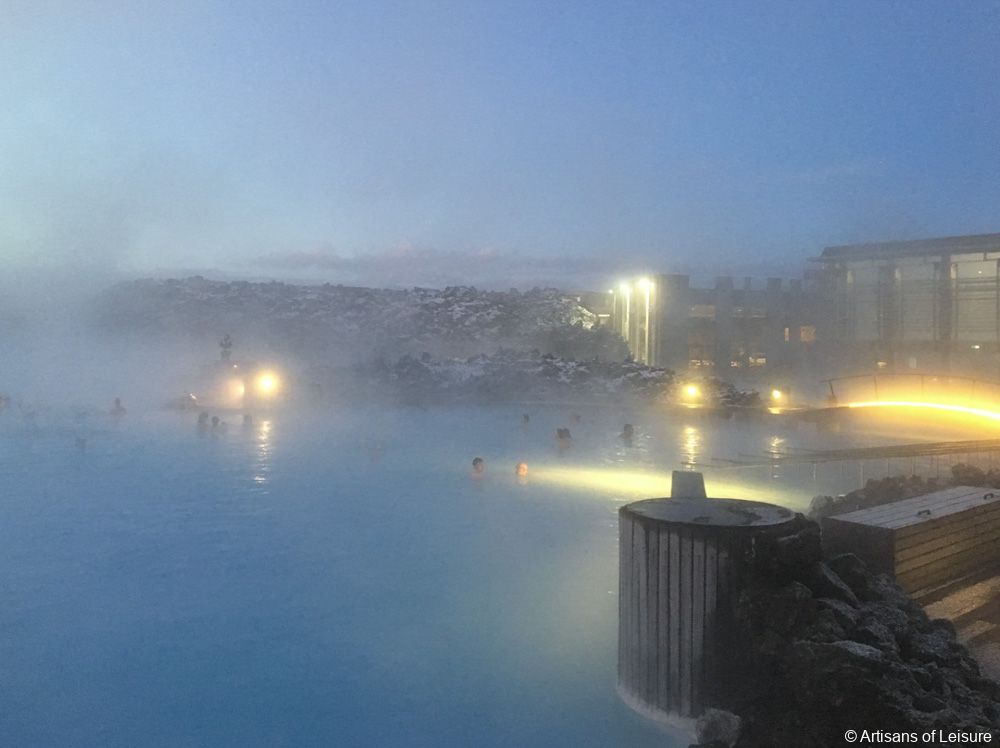
With its steaming blue water and otherworldly setting surrounded by lava fields, the iconic Blue Lagoon is one of the most renowned sites in Iceland. Its skin-nourishing geothermal water, rich in minerals, algae and silica, is prized for its therapeutic properties. Soaking in the geothermal waters of the Blue Lagoon is a highlight of visiting Iceland, a great way to relax after an international flight or after several days of touring.
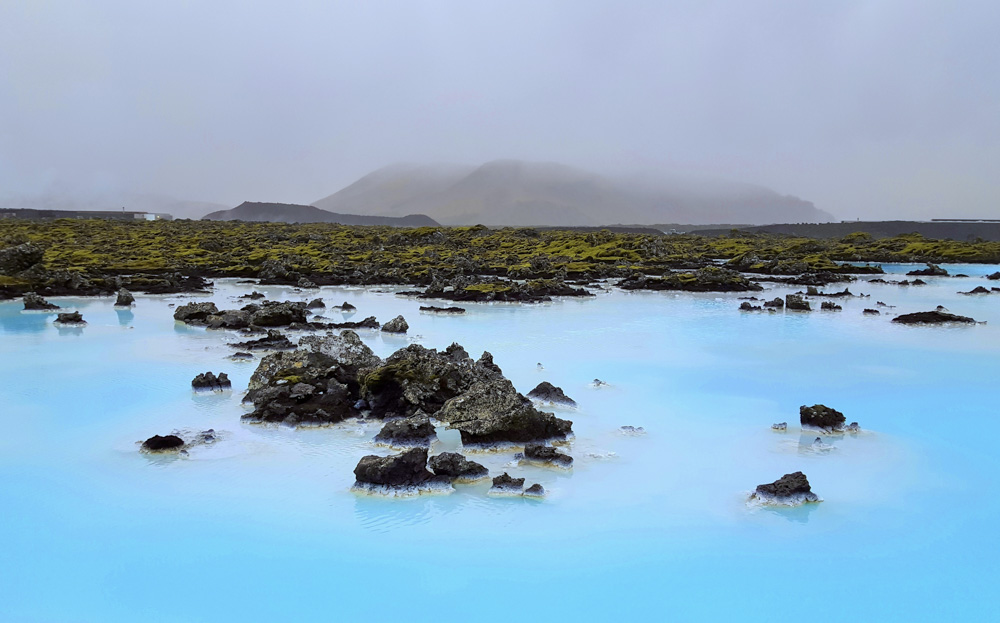
We arrange access to secluded parts of the Blue Lagoon and, for travelers wanting to stay longer, accommodation at the exclusive Retreat Hotel, an ultra-luxurious geothermal resort with a renowned spa, private geothermal pools and a Michelin-starred restaurant. We also arrange visits to the Sky Lagoon in Reykjavik and access to lesser-known geothermal spas and pools throughout the country.
3. Saturnia in Tuscany, Italy
The Tuscany region of Italy has a number of thermal springs, but among the most famous are the hot pools in Saturnia, a small spa town in the Maremma settled by the Etruscans and, subsequently, the Romans who built public bathing complexes over its therapeutic mineral waters heated by the nearby Mount Amiata lava dome.
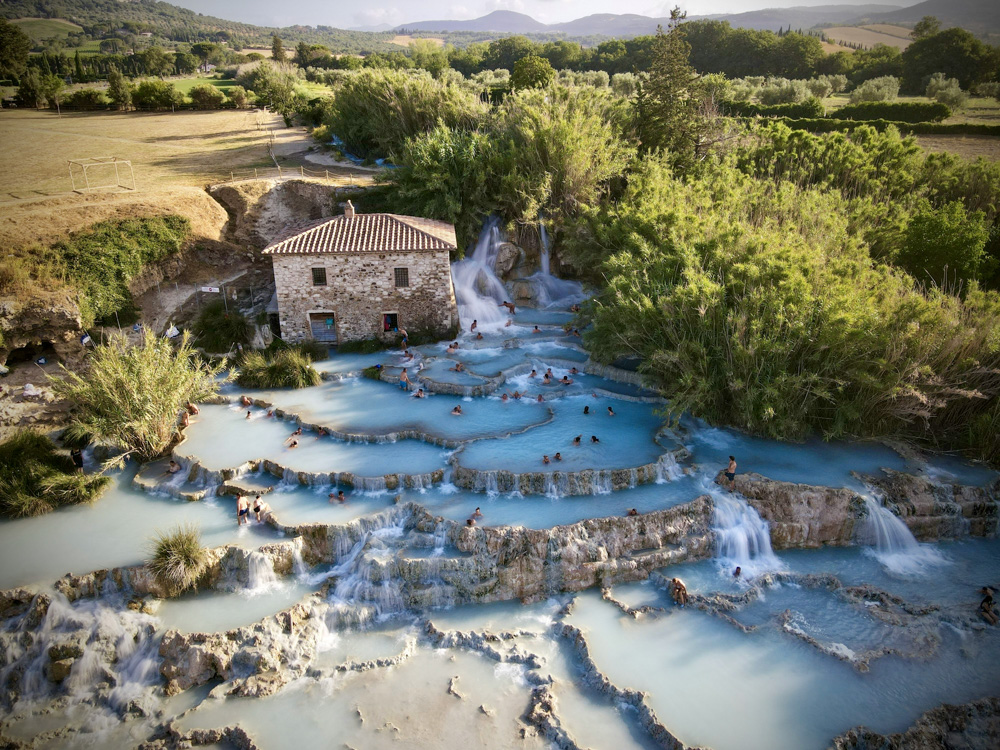
The open-air thermal waterfalls that cascade over travertine terraces at Cascate del Mulino offer locals and visitors an enchanting place for a therapeutic soak in the natural beauty of the Tuscan countryside. Nearby, the Terme di Saturnia is a vast thermal spa resort with extensive spa and wellness facilities focused on the mineral-rich hot pools.
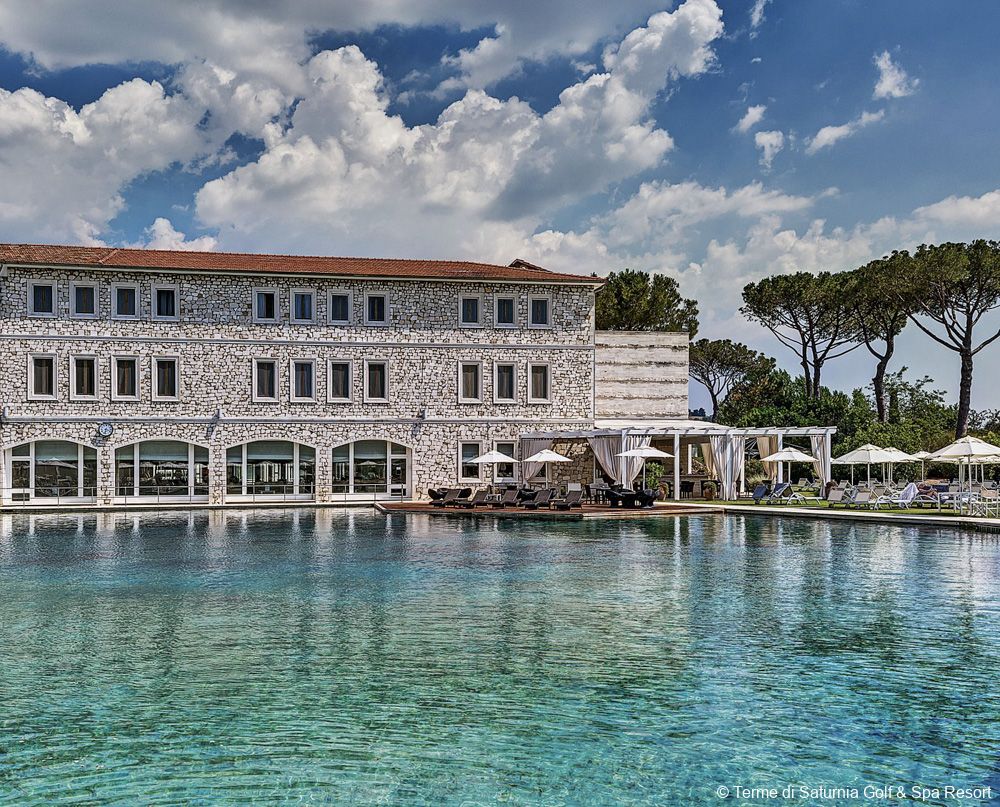
Other destinations in Tuscany well known for their thermal pools include Montecatini Termi, a UNESCO-listed historic spa town and Bagno Vignoni, a picturesque village in the Val d’Orcia with a large hot pool in place of a traditional town square, open-air hot springs and luxurious thermal spa resorts.
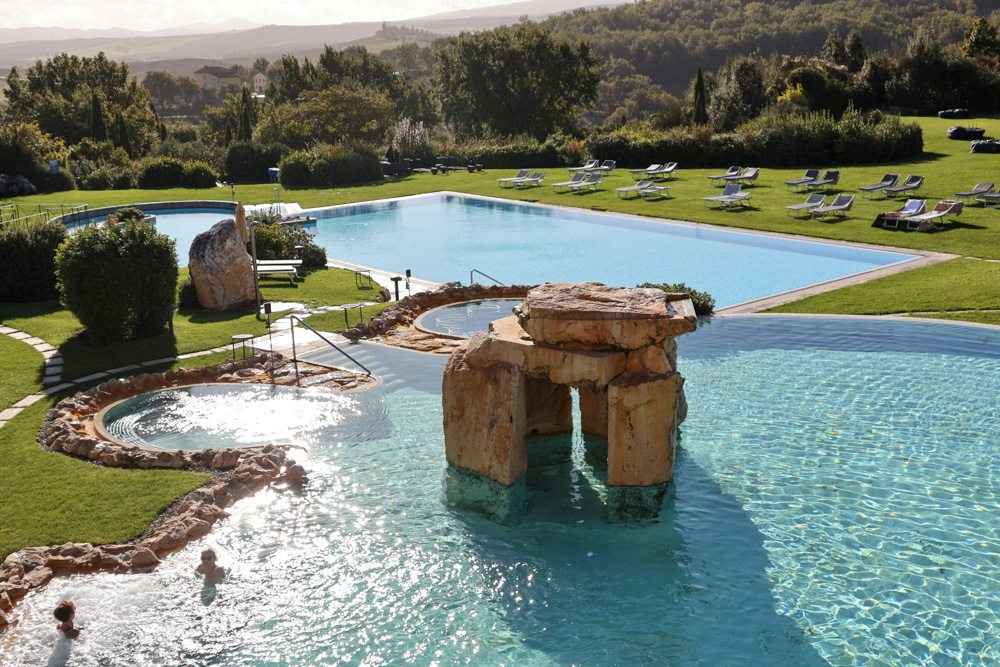
Sicily also has an abundance of natural hot springs, including the thermal baths at Sciacca near the Valley of the Temples and the thermal springs near Segesta.
4. Historic Thermal Baths in Budapest, Hungary
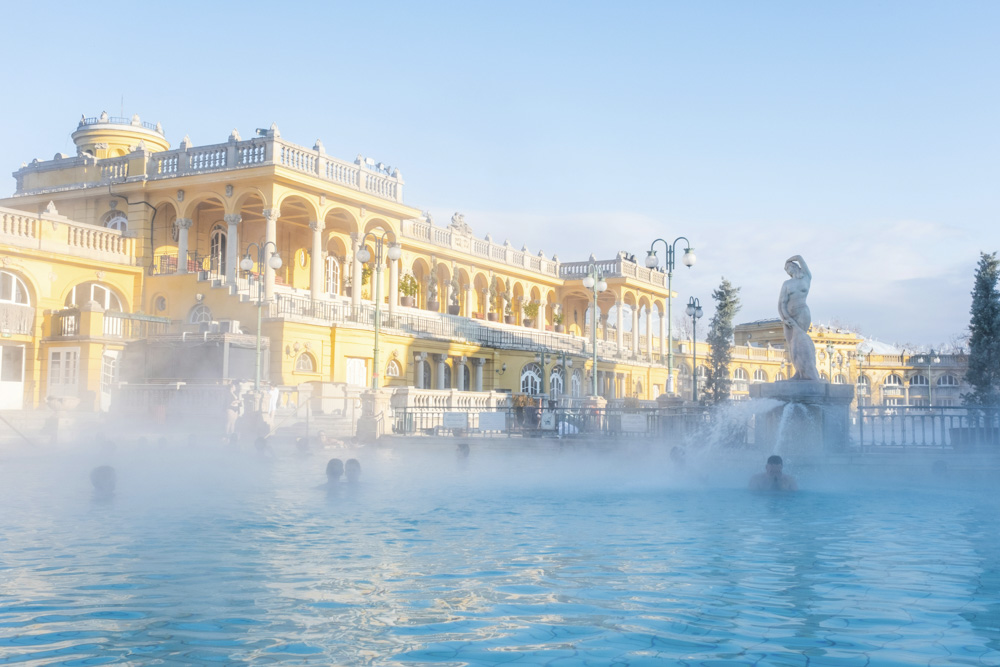
Known as the “City of Spas,” Budapest, Hungary, has an abundance of natural hot springs and some of the world’s largest and most beautiful bath complexes. The historic thermal baths are great to visit any time of year and can be incorporated into any private Budapest tour.
Although bathing culture in Budapest dates back to the ancient Romans who built bathhouses in the area, it was transformed by Turkish bath culture and design, a reflection of Ottoman rule in the 16th and 17th centuries. Several of these 16th-century Turkish baths are still in use today, with traditional hydrotherapy rituals around hot and cold temperatures similar to the bathhouses in Istanbul.
The most renowned bathhouses in Budapest, however, reflect 19th and early 20th-century European wellness trends in therapeutic soaking (“taking the waters”). A place to see and be seen while soaking in hot mineral water, these grand bathing palaces prioritized socialization and the water’s curative properties over ritual bathing with spiritual undertones.
Two of Budapest’s most famous and spectacular thermal baths are the Szechenyi Baths, an opulent Neo-Baroque complex with 18 indoor and outdoor pools, saunas, massage rooms and more…
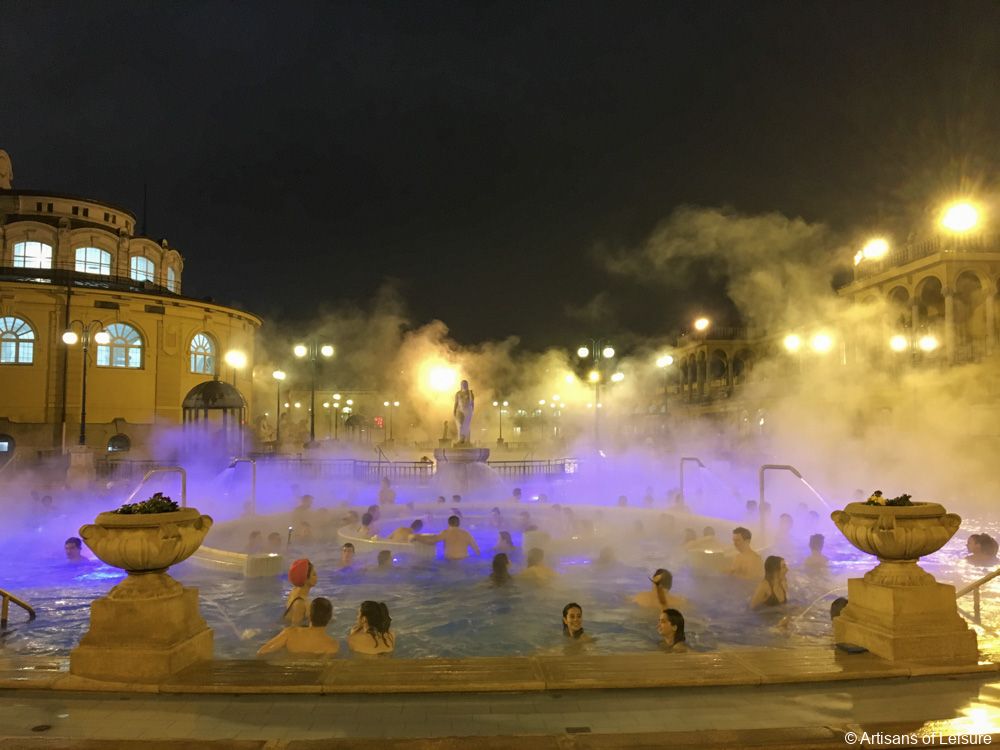
… and the Gellert Baths, constructed in the early 20th century over hot springs used for centuries. Known as one of the city’s most beautiful buildings, it’s a magnificent example of Hungarian Art Nouveau.
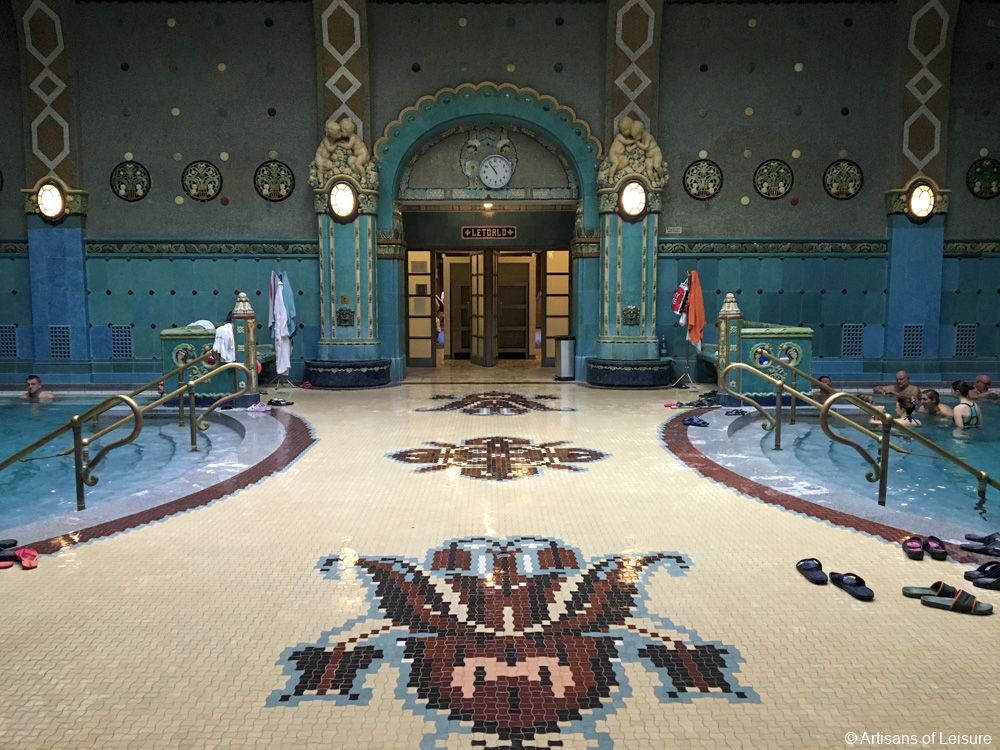
5. Great Spa Towns of Europe, including Bath and Baden-Baden
The beautiful, ornate bathhouses in European spa towns like Bath in England and Baden-Baden in Germany reflect the spa and bathing culture prominent in the 18th and 19th centuries.
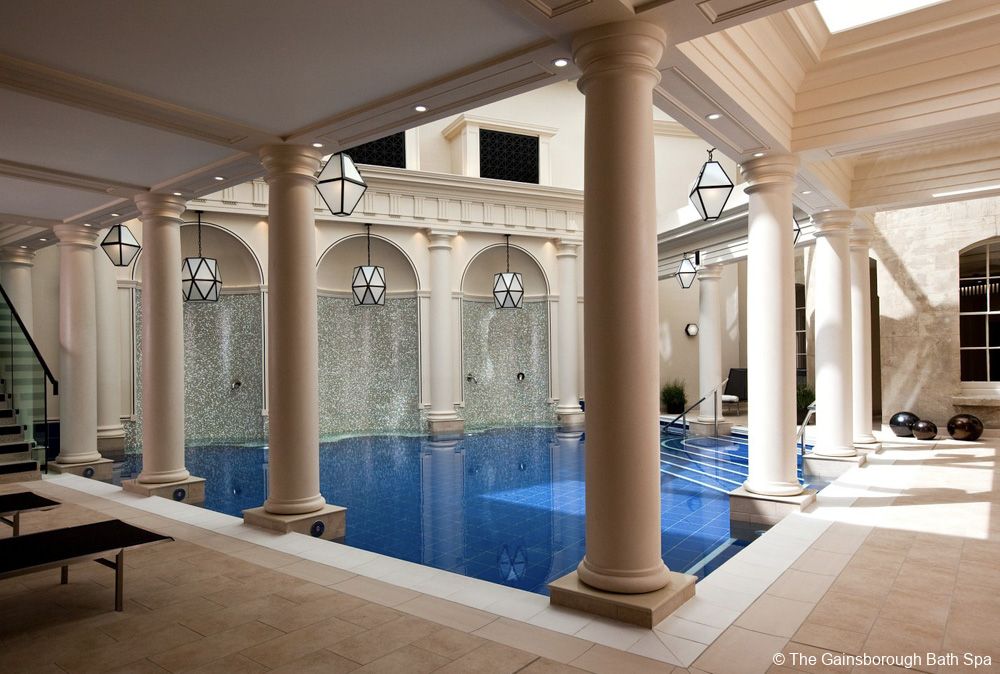
Physicians encouraged patients to travel to hot springs for their curative properties, and “taking the waters” (either by bathing in them or drinking them) became de rigeur among the upper echelons of society for therapeutic and social purposes. As a result, fashionable health resorts with grand bathing complexes and extensive luxury leisure facilities developed around naturally occurring geothermal springs around Europe.
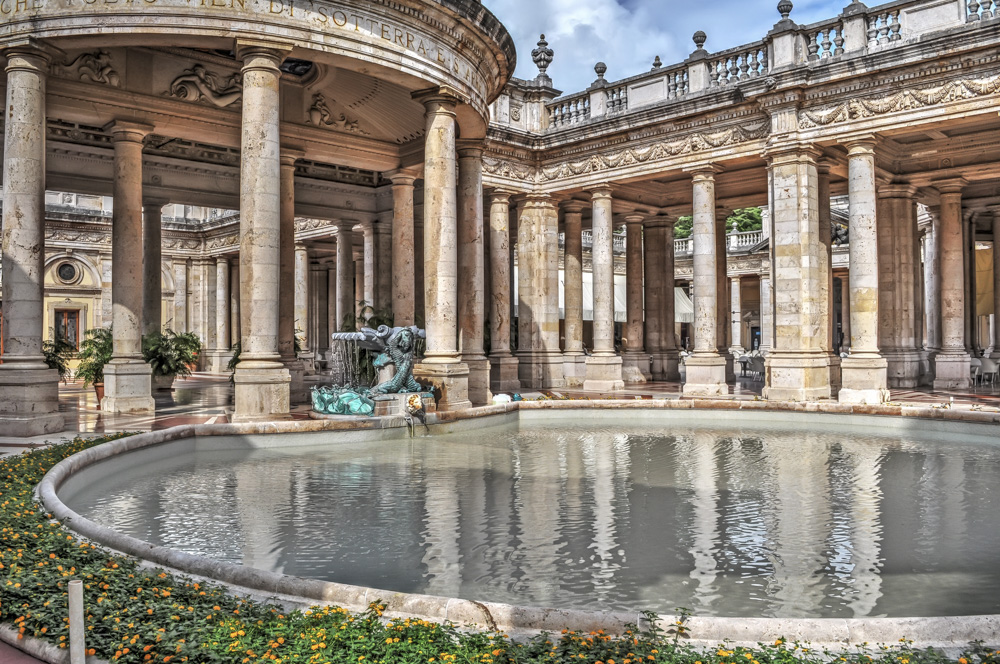
The Great Spa Towns of Europe is a UNESCO World Heritage Site comprising eleven spa towns in seven countries, including Bath (England), Baden-Baden (Germany), Spa (Germany), Montecatini Termi (Italy), and Karlovy Vary (Czech Republic). Although located in different countries and reflecting different regional cultures, many of the European spa towns have a similar history of origin as an ancient Roman settlement built around natural hot springs. One of the most renowned examples of this is the incredible complex of ancient Roman Baths in Bath, England.
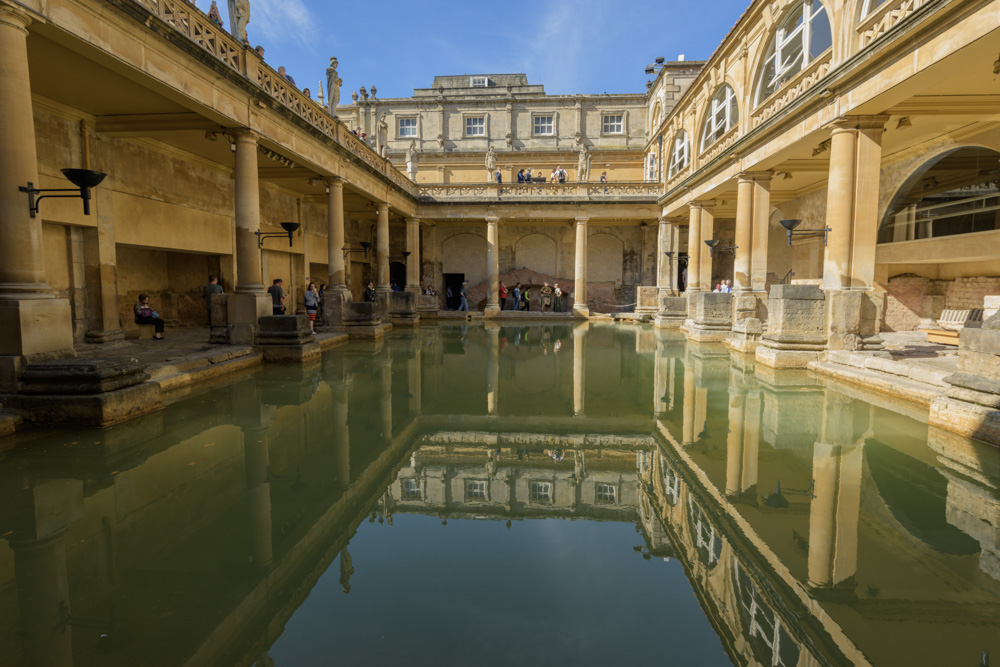
Built around 70 A.D. on top of a hot spring, it’s one of the best-preserved examples of an ancient Roman spa and bathhouse in the world. Located adjacent to a temple dedicated to two goddesses Sulis (a goddess of healing springs) and Minerva (the goddess of wisdom), it’s a fascinating combination of public bathing culture and spirituality.
We arrange for our travelers in Bath to privately tour the archaeological site and museum, visit the famous Pump Room to taste the water and, if interested, appointments to soak in baths filled with the same geothermal mineral waters prized by the ancient Romans.
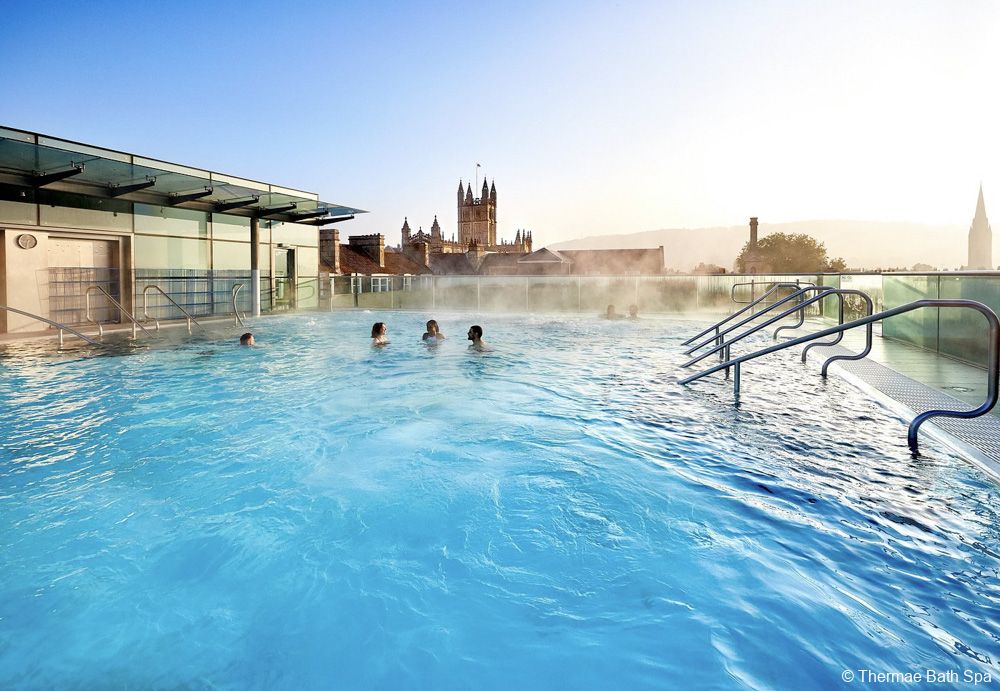
The Great Spa Towns of Europe continue to attract travelers today with their historic bathhouses, incredible architecture, luxurious modern leisure facilities, and cultural touring opportunities. We recommend having us incorporate time in some of our favorite spa towns, such as Baden-Baden, in conjunction with private cultural touring.
6.) Hammams in Morocco
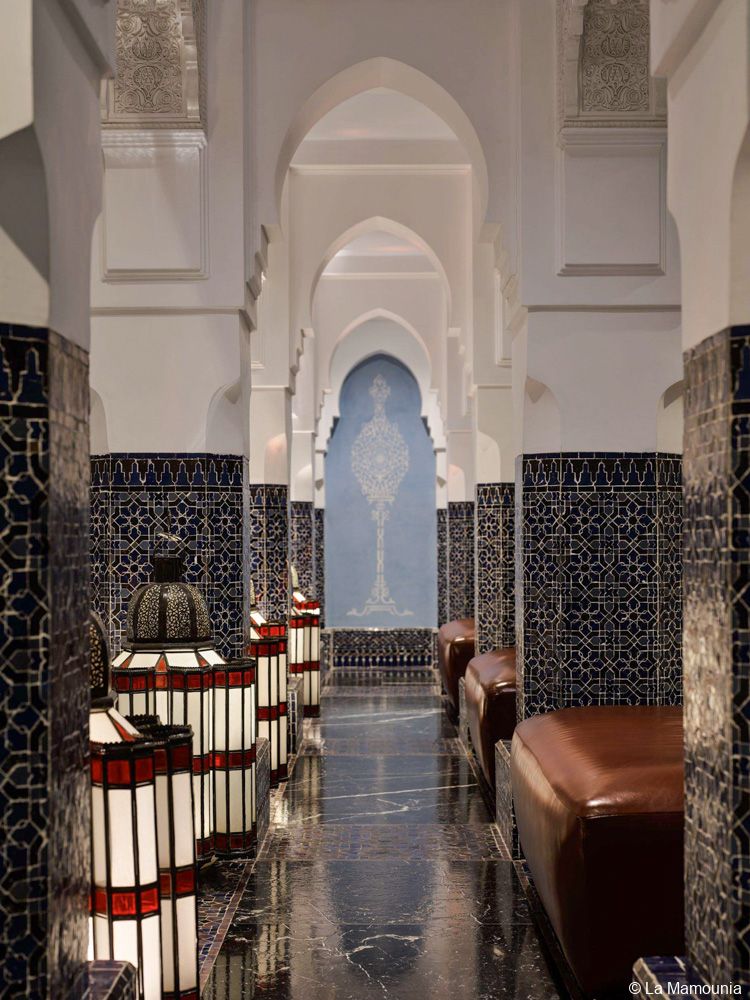 Inspired by ancient Roman bathhouses, hammams in Morocco were originally the primary source of public hygiene for communal bathing and the ritual cleansing required by Islam. Consisting of several dimly lit rooms, often beautifully decorated with zellige tiles, carved marble and vaulted ceilings, hammams continue to be a place for locals and visitors to socialize and relax while enjoying the therapeutic benefits of steam and heat.
Inspired by ancient Roman bathhouses, hammams in Morocco were originally the primary source of public hygiene for communal bathing and the ritual cleansing required by Islam. Consisting of several dimly lit rooms, often beautifully decorated with zellige tiles, carved marble and vaulted ceilings, hammams continue to be a place for locals and visitors to socialize and relax while enjoying the therapeutic benefits of steam and heat.
Typically, a Moroccan hammam visit begins in a steam room to open pores and relax before bath attendants bath attendants perform cleansing and exfoliating treatments with black beldi soap, a Moroccan soap high in Vitamin E, and ghassoul, a mineral-rich clay from the Atlas Mountains used for centuries. The hammam experience concludes in a cold room to cool down.
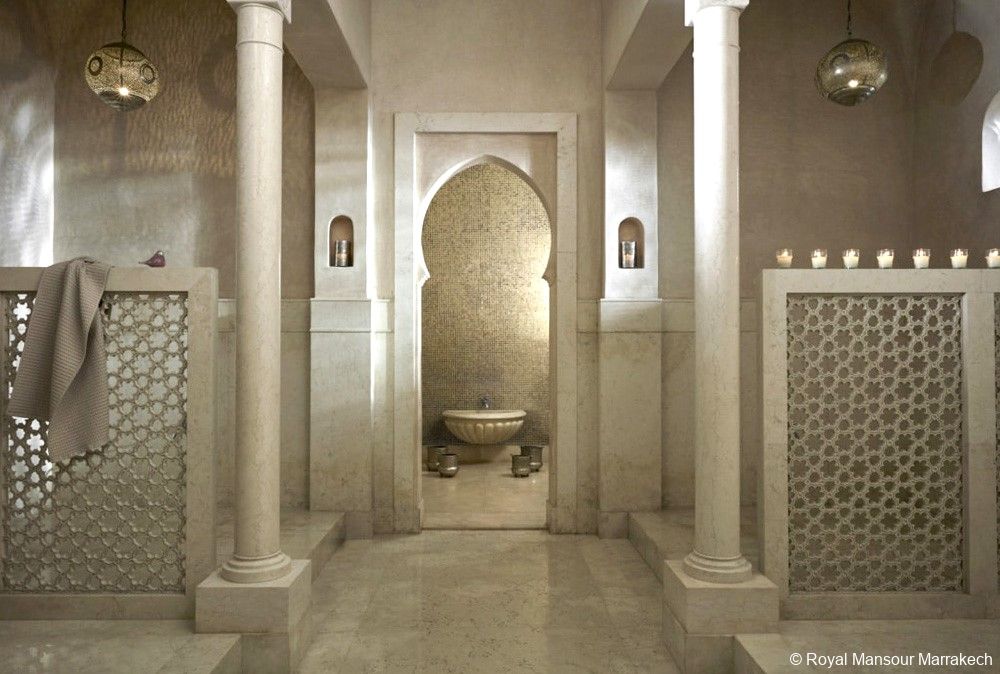
For interested travelers on our private Morocco tours, we arrange private, luxurious hammam experiences that can also include hair treatments with purifying ghassoul clay, a therapeutic massage with argan oil and time to relax with mint tea and traditional local treats.
7. Pamukkale Thermal Pools and Historic, Luxurious Turkish Baths in Istanbul, Turkey
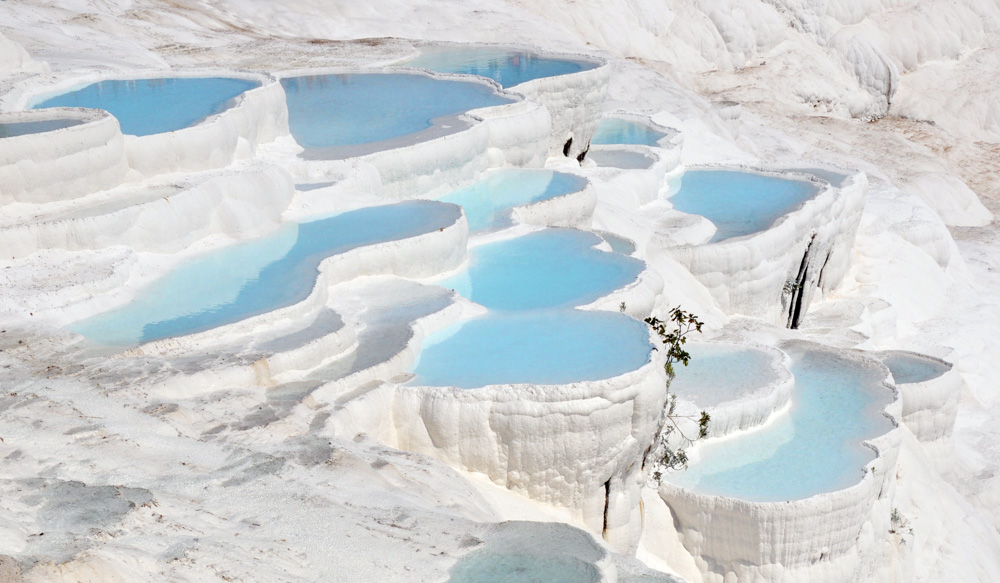
The turquoise hot springs in the dazzling white travertine terraces of Pamukkale (“cotton castle” in Turkish) are an otherworldly sight in southwest Turkey. Renowned for its therapeutic properties since classical antiquity, the spectacular thermal pools are a UNESCO World Heritage Site together with the nearby Greco-Roman spa town of Hierapolis, known for its extensive ruins.
Like Moroccan hammams, Turkish baths in Istanbul, Turkey, are architectural masterpieces, marble-clad complexes with beautiful interiors that use heat and steam for cleansing, exfoliating and relaxation for mental and physical wellbeing.
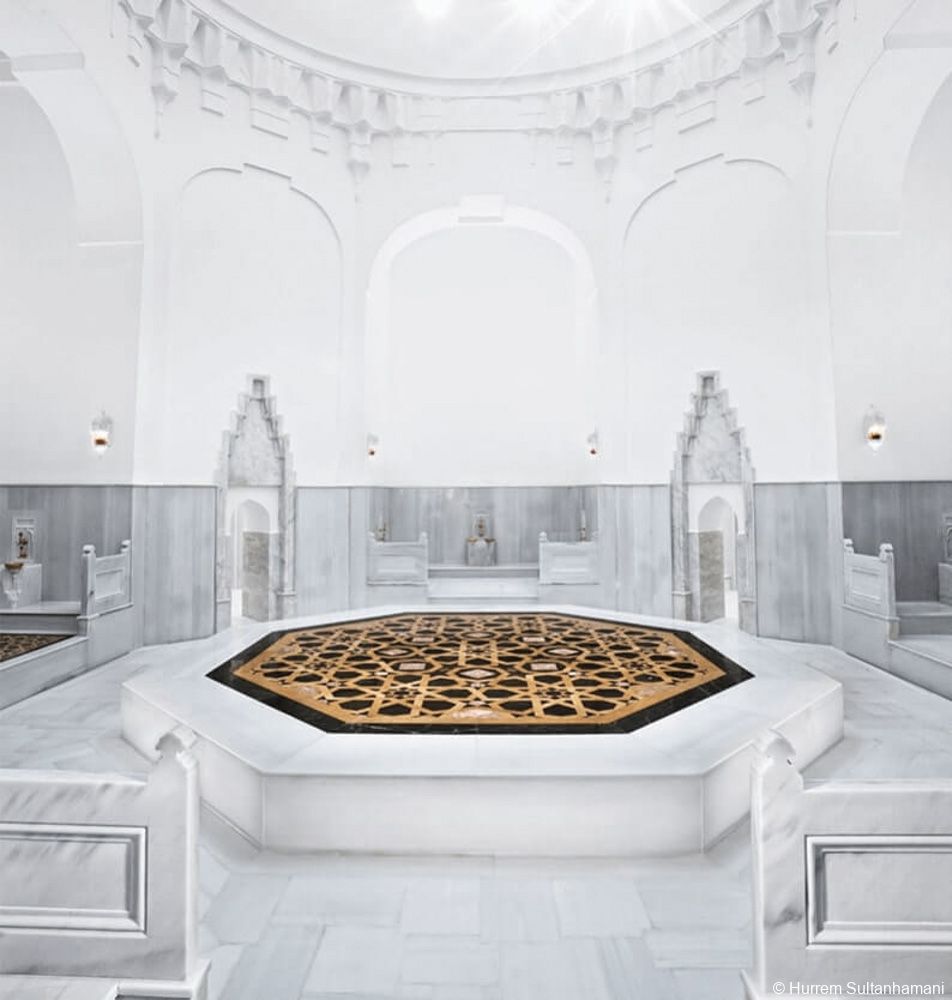
Inspired by Roman bathhouses, Turkish baths date to the 5th century, although they became more widespread and ornate during the height of the Ottoman Empire in the 15th century. Topkapi Palace and Dolmabahce Palace, which we include in our private Istanbul tours, have incredible examples of well-preserved Ottoman baths.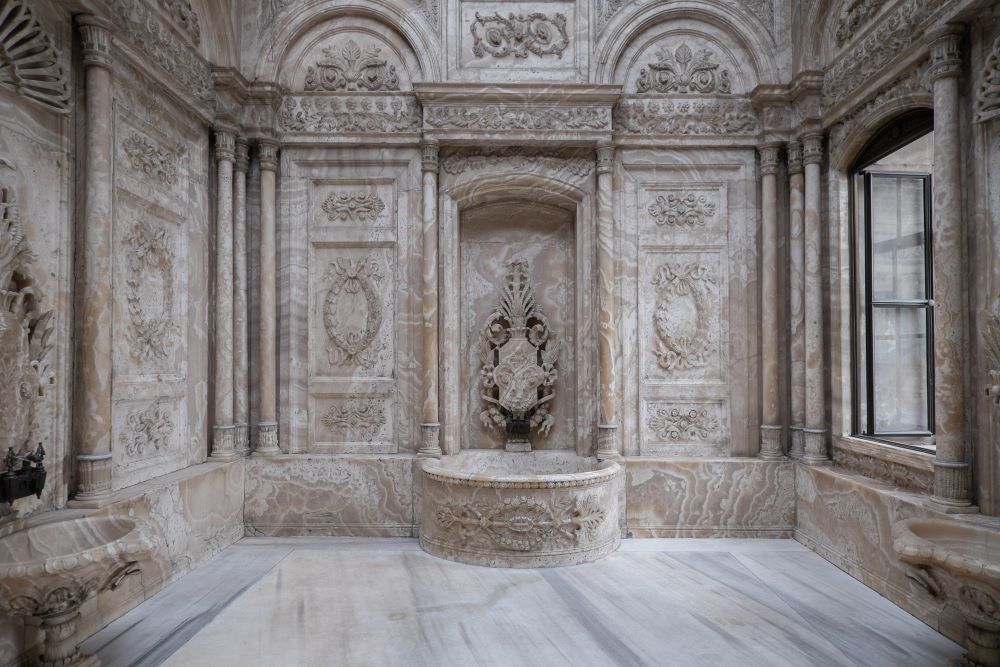
The most elegant Turkish baths in Istanbul offer travelers an incredible cultural experience in an exquisite, tranquil settings. The visitor to the Turkish bath begins in a warm room to sweat and relax before being scrubbed by an attendant to cleanse and purify the body, a reflection of its roots in Islamic spiritual practices. This is followed by relaxing on a warm marble slab during a rejuvenating massage. A visit to a Turkish bath traditionally concludes with submersion in hot and cold pools, one of the differences from a Moroccan hammam, which does not have pools for full-body submersion.
The dimly lit steamy rooms with sunlight filtering through starbursts in the ceiling and the sound of fountains makes for an incredibly memorable and relaxing experience.
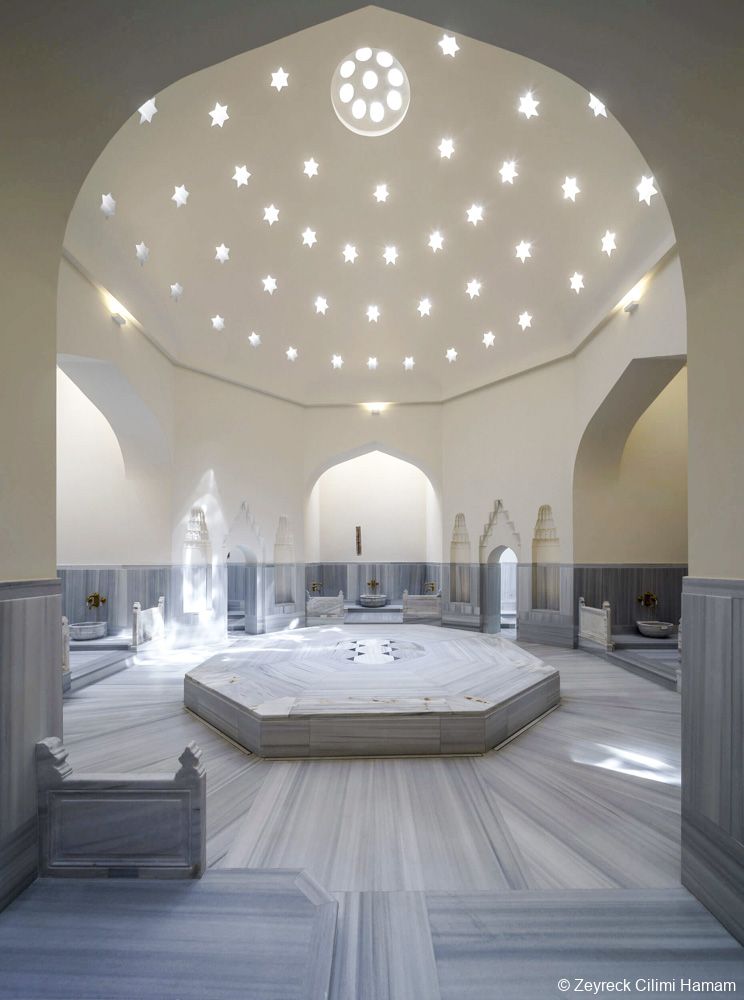
We arrange for our travelers to enjoy private Turkish bath experiences at the top luxury hotels in Istanbul or, if interested, we can also arrange appointments at the most renowned historic Turkish bathhouses celebrated for their opulent, well-preserved Ottoman interiors.
8. Saunas in Finland
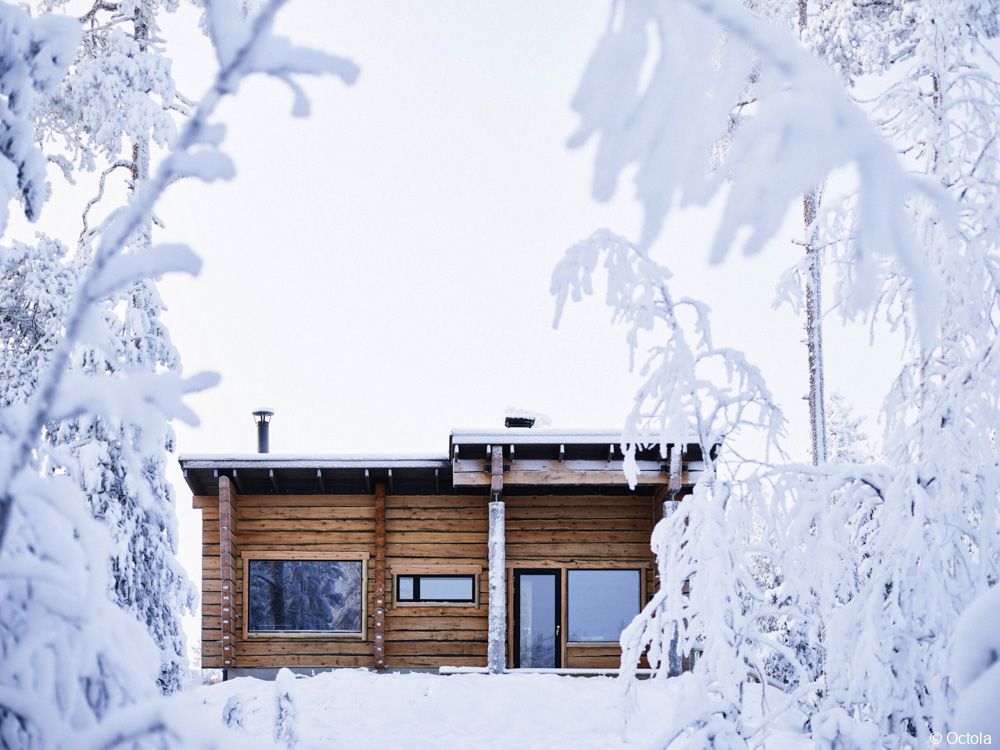
The opposite of majestic Moroccan hammams and Turkish baths, the Finnish sauna has maintained its simplicity for centuries. Comprised of a semi-dark room heated to around 150 degrees Fahrenheit, the only amenities are benches and a stove, traditionally fired with burning birch wood. Participants throw water on stones heated on the stove to create loyly, the evaporating steam that creates the dry heat at the heart of the sauna experience.
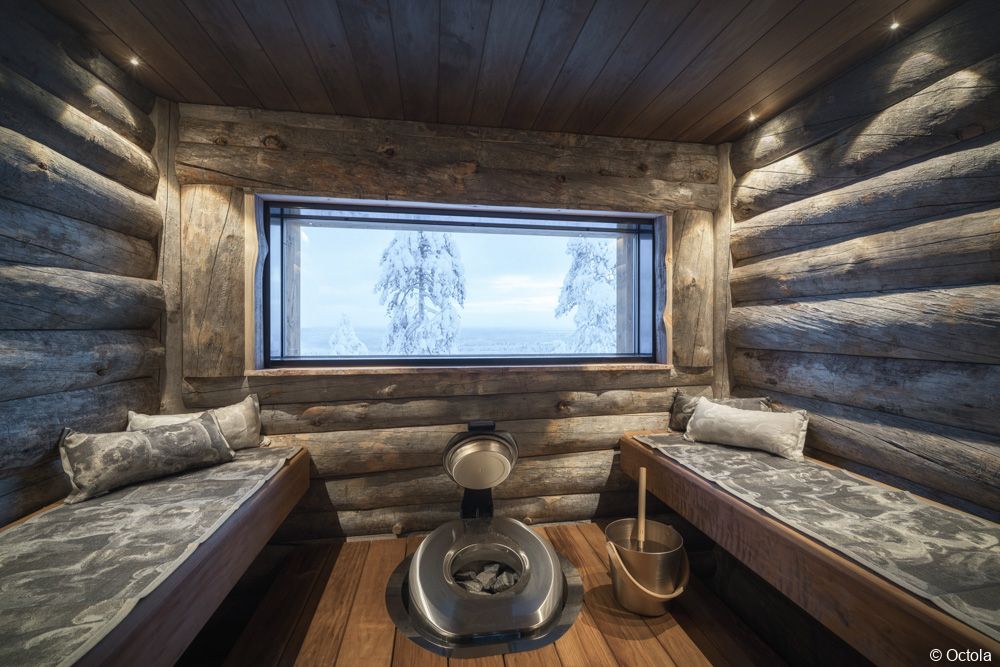 When the heat becomes unbearable, is its customary to take a break by jumping into a cold plunge pool, a lake, the sea or even the snow before starting the process over again. Some people like to use vihta (bundles of birch twigs) to gently slap their bodies to increase their blood circulation.
When the heat becomes unbearable, is its customary to take a break by jumping into a cold plunge pool, a lake, the sea or even the snow before starting the process over again. Some people like to use vihta (bundles of birch twigs) to gently slap their bodies to increase their blood circulation.
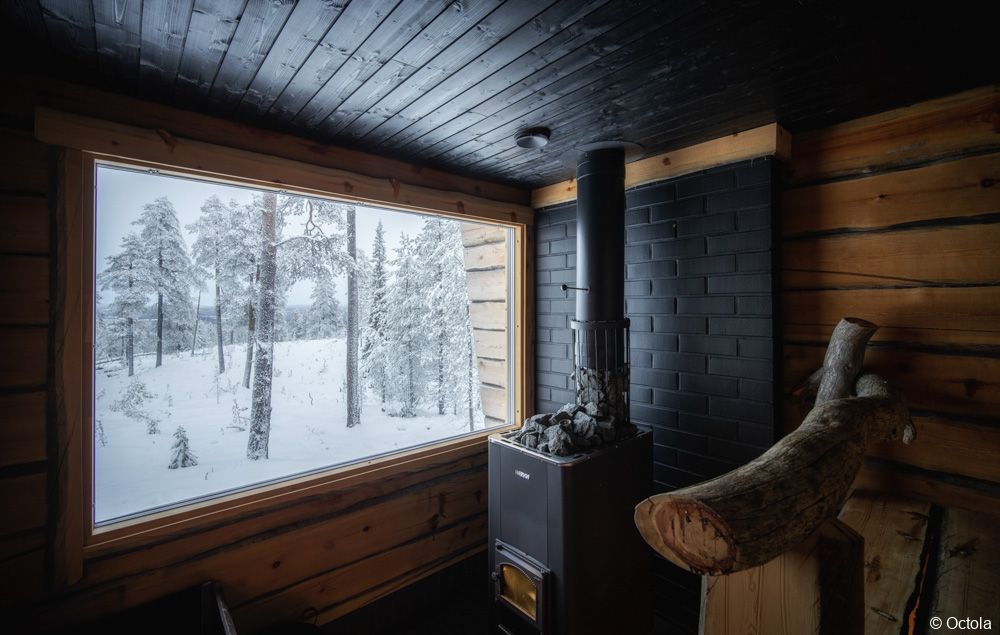
While saunas are also prevalent in the Baltic States—Estonia, Lithuania and Latvia—as well as Sweden, Denmark and Norway, Finland is credited with the creation of the western sauna. Inscribed on the UNESCO list of Intangible Heritage, Finnish saunas are an integral part of the local culture and are found throughout the country in company headquarters, private homes and even the parliament building. Finnish people of all ages usually visit a sauna weekly to detoxify, relax and socialize.
9. Hot Stone Baths in Bhutan
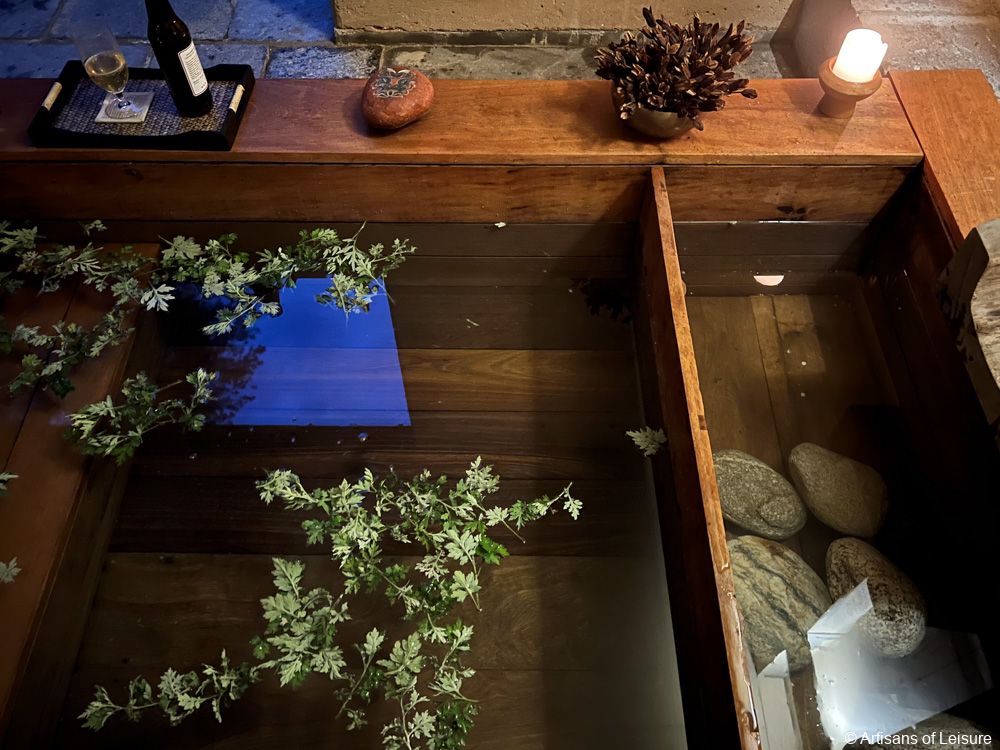
The bathing culture in the Himalayan kingdom of Bhutan stems from a centuries-old tradition of soaking in menchu (medicinal water) warmed by hot stones to warm up in winter and ease sore muscles after laboring in fields. Traditionally, the hot stone baths were located in simple sheds near a river for access to fresh water and stones. The Bhutanese bathing ritual, believed to derive from a combination of Tibetan medicine and Indian Ayurvedic practices is still prevalent today, with locals relaxing in hot stone baths weekly and, in some cases, consulting an astrologer to determine the most auspicious day.
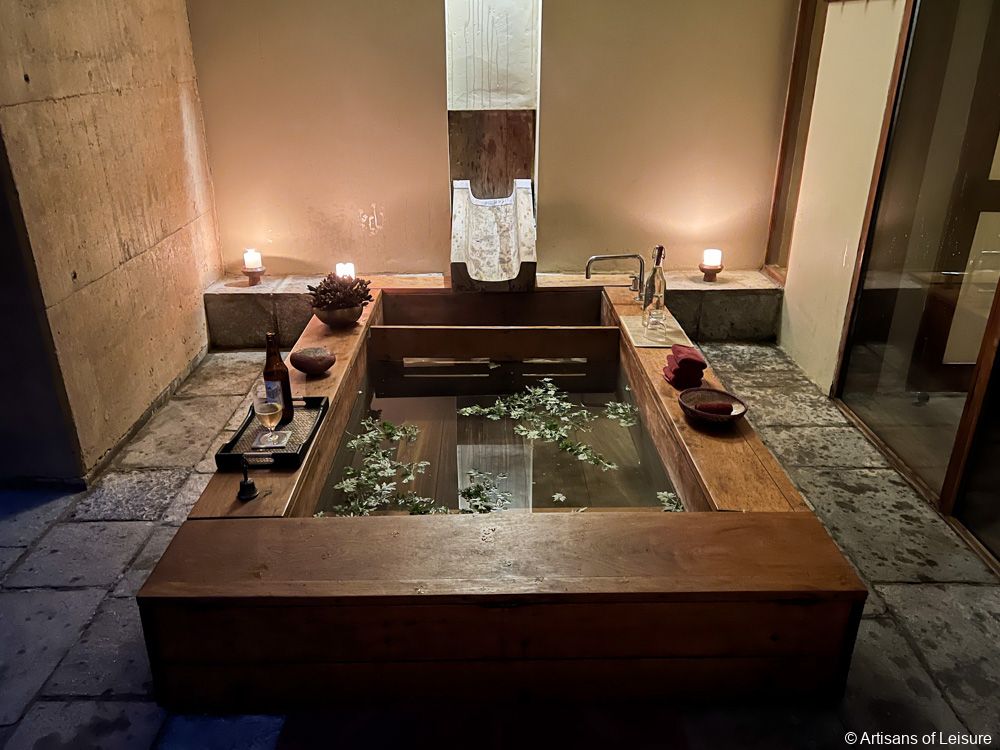
A Bhutanese hot stone bath involves relaxing in a combination of fresh river water and artemisia leaves (wormwood) in a deep wooden soaking tub. The water is heated with river stones that have been warmed over a fire until glowing red. Placed in a compartment of the tub, they release a high concentration of minerals and can be replenished throughout the soak. Our favorite luxury resorts also have the option for a deep tissue massage and other spa services after the bath.
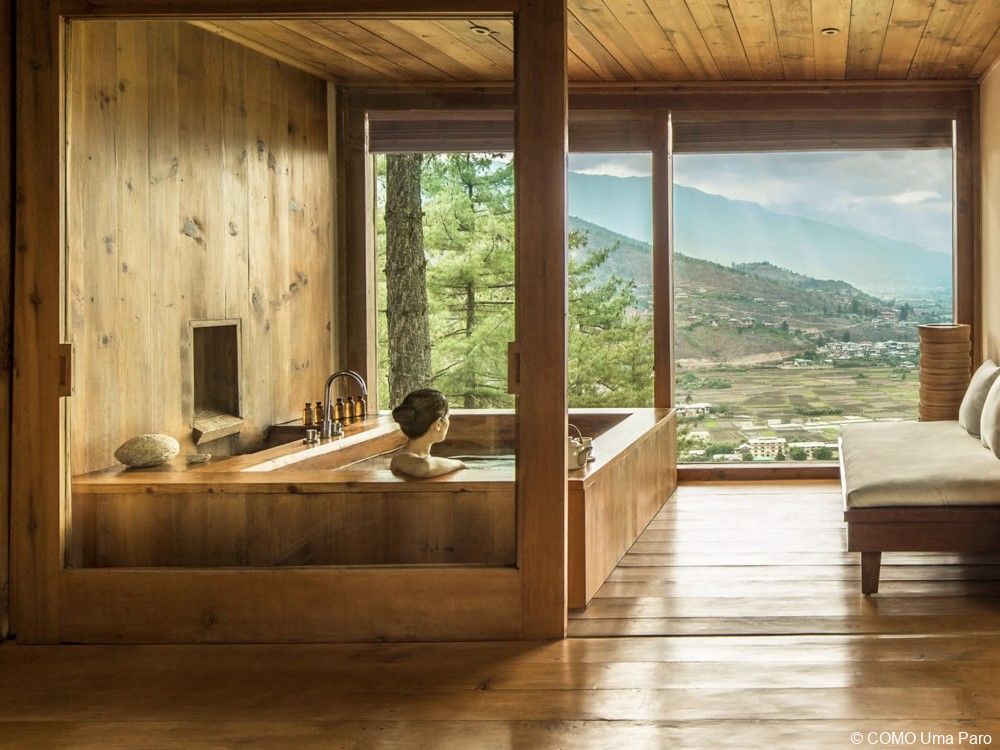
An incredibly relaxing and rejuvenating cultural experience, soaking in a Bhutanese hot stone bath overlooking spectacular Himalayan landscapes is an ideal way to end a day of touring or hiking to the Tiger’s Nest monastery.
10. Sulfur Bathhouses in Tbilisi, Georgia
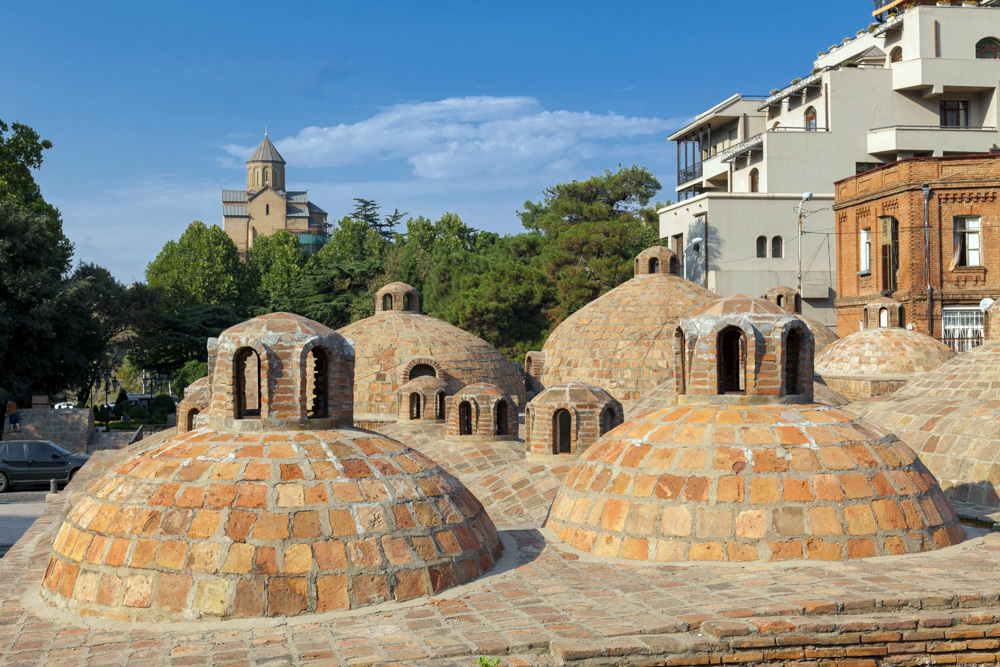
The famous sulfur baths and bathhouses in Tbilisi, Georgia, have been part of the Georgian capital’s cultural heritage and architectural landscape for centuries. Dating to the fifth century when, according to legend, King Vakhtang I established Tbilisi after discovering the area’s hot springs, (Tbilisi means “warm” in Old Georgian) the public sulfur baths have played a central role in Georgian society as a place for socializing and conducting business.
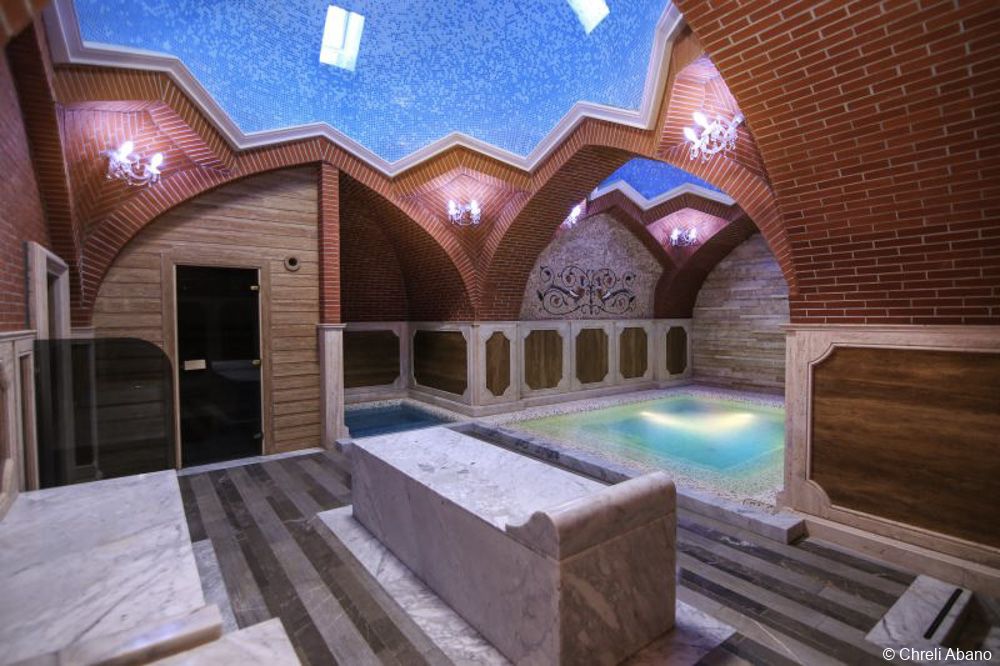
Although a bathing culture was prevalent in Tbilisi in the 13th century, the handful of bathhouses that still exist were constructed in the 17th and 18th centuries during Ottoman rule, resulting in design heavily influenced by Persian baths with domed ceilings and mosaic tiles. The most iconic bathhouse in Tbilisi, Chreli Abano (Orbeliani), is distinguished by its colorful mosaic facade inspired by Islamic architecture.
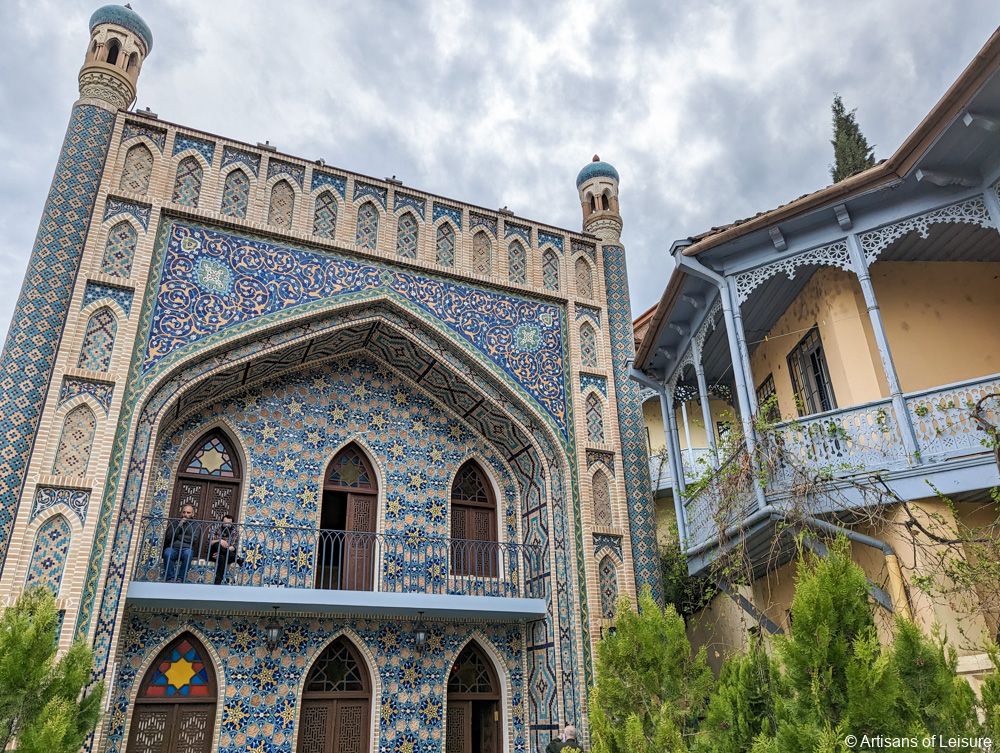
Clustered around the Abanotubani (“bath district”) neighborhood of the Old Town, the bathhouses are below street level and are discernible by their unusual beehive-like structures that give the area its distinctive look; the brick domes provide the underground bathhouses with light and ventilation.
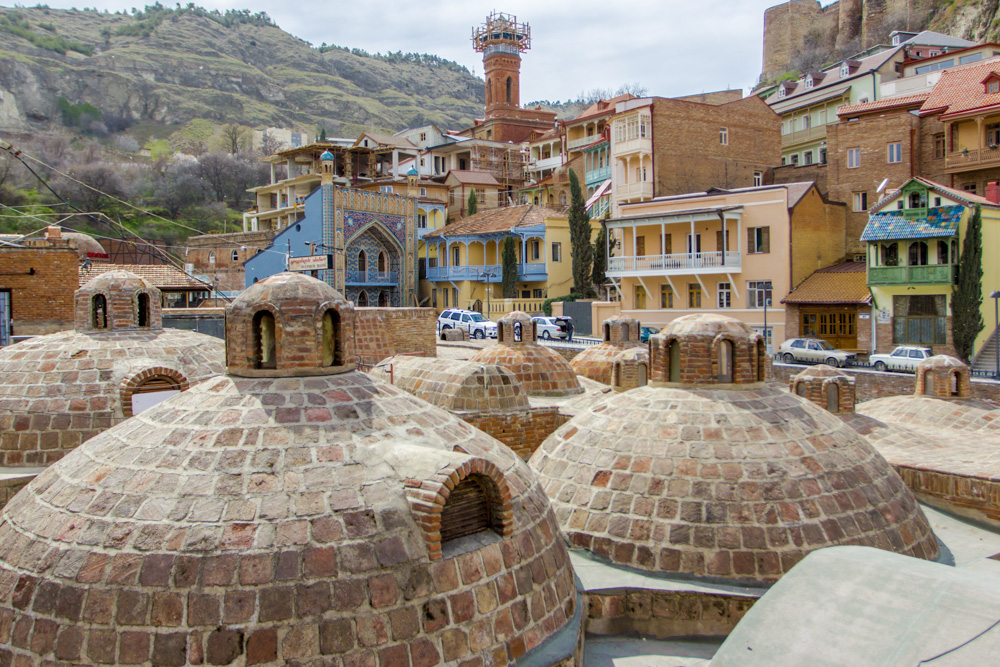
We can arrange for private VIP rooms for our travelers interested in experiencing Georgian bathing culture, including soaking in the hot, mineral-rich sulfur waters and an exfoliating scrub administered by a bath attendant, followed by a massage.
Other notable sites to experience local bathing cultures include the luxurious spas at our favorite hotels in Switzerland, known for their grand architecture, modern wellness therapies and spectacular settings…
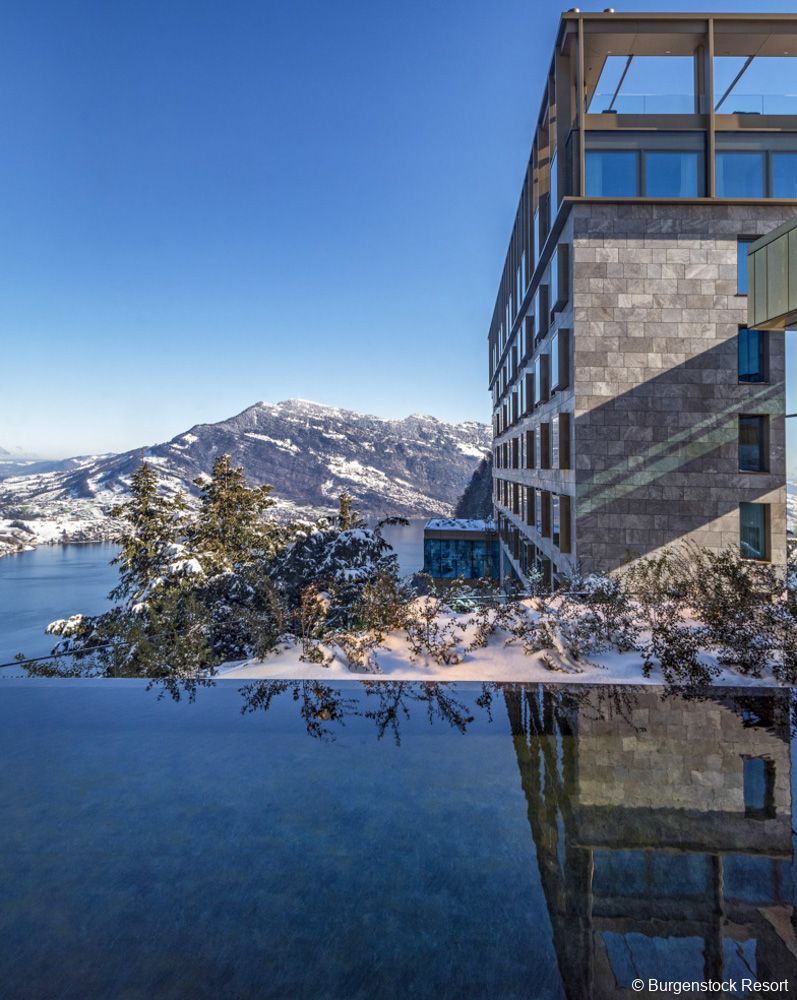
…the Dead Sea in Israel and Jordan; jjimjilbangs in South Korea, traditional Korean bathhouses that feature saunas lined with Himalayan salt pebbles, jade stones, clay or charcoal; visiting cenote in Mexico; open-air thermal pools in New Zealand and hot baths in the Peruvian jungle.
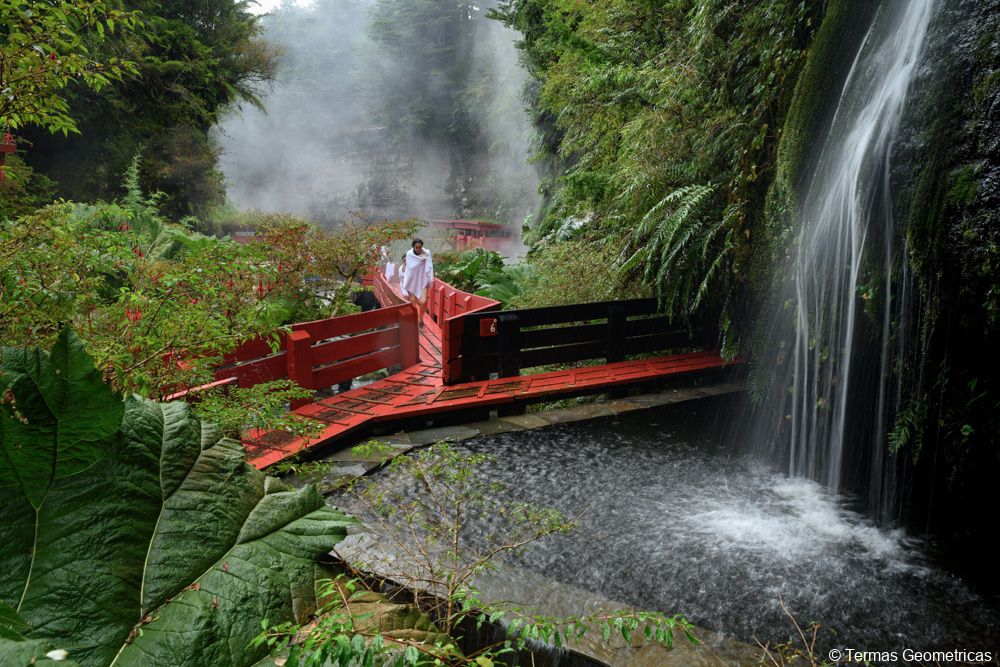
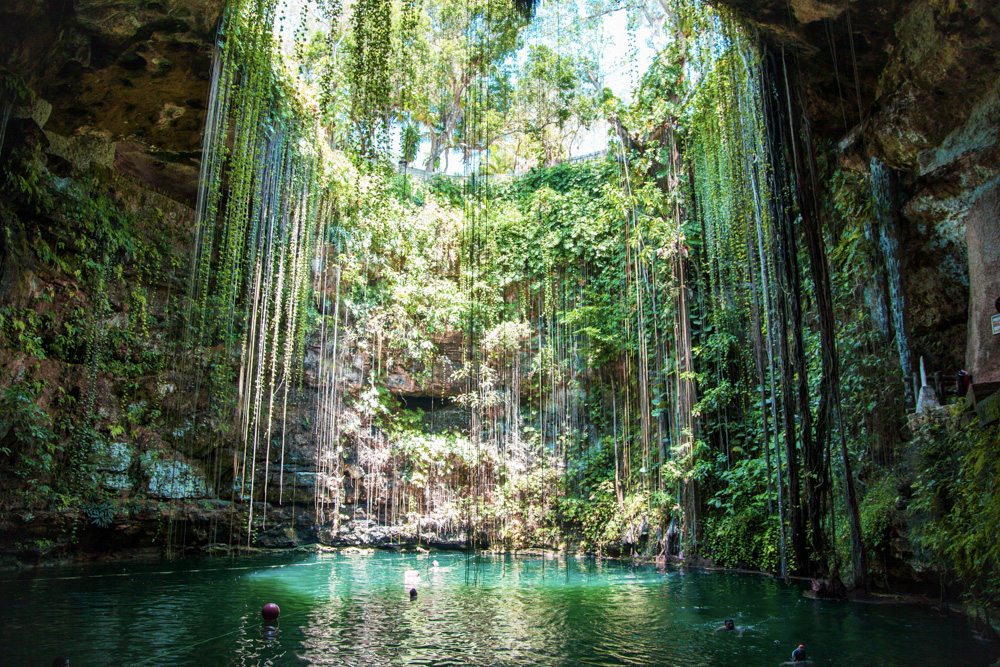 We also take travelers to see incredible ruins of ancient Roman bathhouses at notable archaeological sites in England, Europe, the Middle East and North Africa.
We also take travelers to see incredible ruins of ancient Roman bathhouses at notable archaeological sites in England, Europe, the Middle East and North Africa.
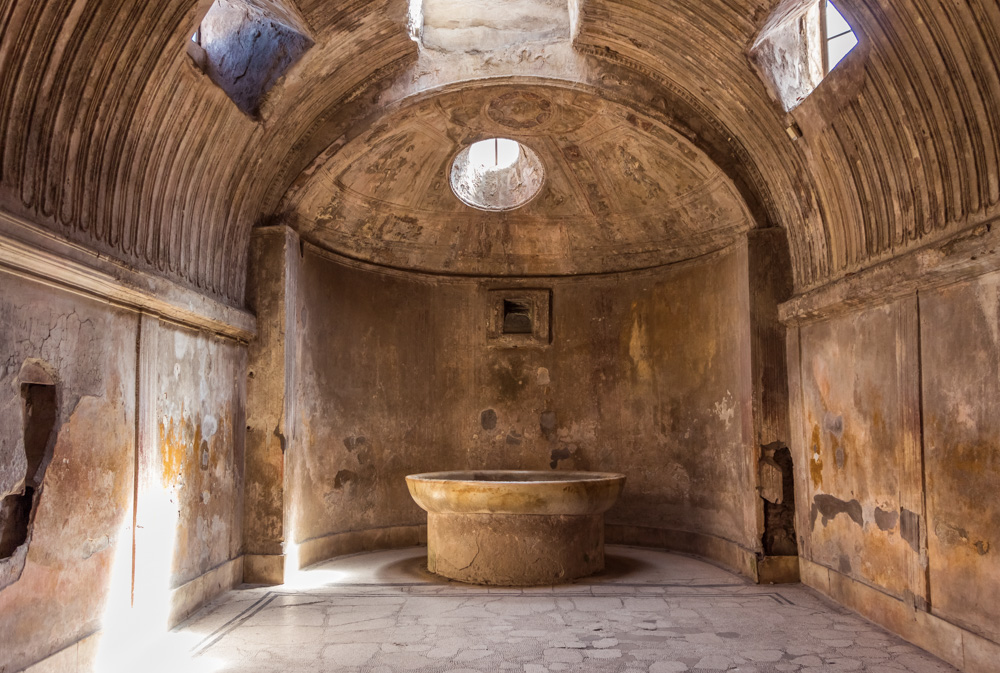
Contact Artisans of Leisure to begin planning a private luxury tour that incorporates local spa and wellness practices and memorable visits to unique local thermal baths.
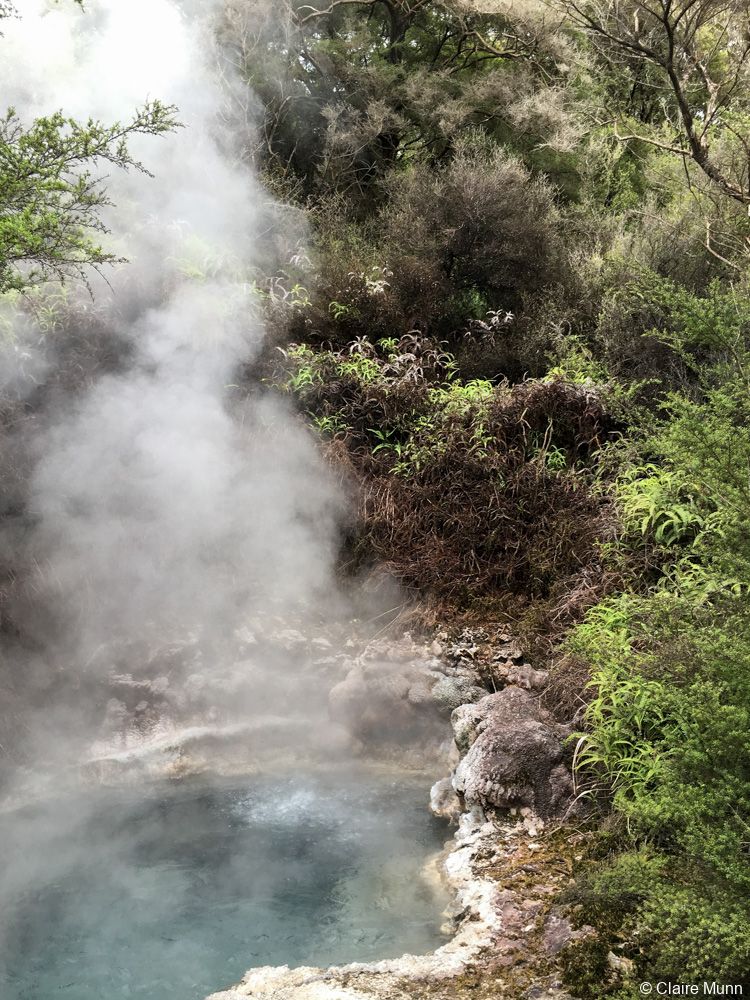
Destinations: Asia, England, Europe, Finland, Georgia, Hungary, Iceland, Italy, Japan, Morocco, Scandinavia, Turkey, UK
Tags: Artisans of Leisure, Asia hot springs, Baden-Baden spas, Bath, bath house, Bath spa hotels, bathing culture, best thermal baths, Bhutan tours, Blue Lagoon, Budapest, Budapest's best baths, cenote tours, Europe spa tours, Finland sauna, Finland tours, Finnish, Gellert Baths, Gellert spa, Georgia hot springs, geothermal, Gora Kadan, hammam, hot springs, hot springs tours, hot stone bath, Hungary tours, Iceland hot springs, insider Italy, Japan tours, Kayotei, luxury Bhutan tours, luxury hammam, luxury Iceland tours, luxury Mexico resorts, luxury Mexico tours, luxury Morocco tours, luxury onsen, luxury onsen baths, luxury spa and wellness tours, luxury spas, luxury Turkey tours, luxury UK tours, Marrakesh, Moroccan hammam, Morocco tours, New Zealand hot springs, New Zealand tours, onsen, onsen ryokan, open-air baths, private Georgia tours, private Istanbul tours, private onsen, private Tuscany tours, Riviera Maya, Roman baths, Roman ruins, Saturnia, sauna, Sicily hot springs, Sky Lagoon, spa culture, spa tours, sulfur baths, Tbilisi baths, Tbilisi Old Town, thermal baths, Turkey tours, Turkish bath, Tuscany, Tuscany hot springs, UNESCO, wellness tours, wellness travel, world's best spas, world's best thermal baths

 MENU
MENU

